
Operating Instructions
Model No.
Mainframe
POWER
ALARM
 POWER2
POWER2
 ALARM2
ALARM2
Control panel
Before operating this product, please read the instructions carefully and save this manual for future use.

Operating Instructions
Model No.
Mainframe
POWER
ALARM
 POWER2
POWER2
 ALARM2
ALARM2
Control panel
Before operating this product, please read the instructions carefully and save this manual for future use.

Safety precautions
CAUTION
RISK OF ELECTRIC SHOCK
DO NOT OPEN
CAUTION: TO REDUCE THE RISK OF ELECTRIC SHOCK,
DO NOT REMOVE COVER (OR BACK).
NO USER SERVICEABLE PARTS INSIDE.
REFER TO SERVICING TO QUALIFIED SERVICE PERSONNEL.
The lightning flash with arrowhead symbol, within an equilateral triangle, is intended to alert the user to the presence of uninsulated ???dangerous voltage??? within the product???s enclosure that may be of sufficient magnitude to constitute a risk of electric shock to persons.
The exclamation point within an equilateral triangle is intended to alert the user to the presence of important operating and maintenance (service) instructions in the literature accompanying the appliance.
WARNING:
???THIS APPARATUS MUST BE EARTHED
To ensure safe operation, the
Extension cords used with the apparatus must have three cores and be correctly wired to provide connection to the earth. Wrongly wired extension cords are a major cause of fatalities.
The fact that the apparatus operates satisfactorily does not imply that the power point is earthed or that the installation is completely safe. For your safety, if you are in any doubt about the effective earthing of the power point, please consult a qualified electrician.
For CANADA
This class A digital apparatus complies with Canadian
Cet appareil num??rique de la classe A est conforme ?? la norme
WARNING:
???TO REDUCE THE RISK OF FIRE OR
ELECTRIC SHOCK, DO NOT EXPOSE THIS
APPARATUS TO RAIN OR MOISTURE.
???THE APPARATUS SHALL NOT BE EXPOSED
TO DRIPPING OR SPLASHING AND THAT
NO OBJECTS FILLED WITH LIQUIDS, SUCH
AS VASES, SHALL BE PLACED ON THE
APPARATUS.
CAUTION:
TO REDUCE THE RISK OF FIRE OR SHOCK
HAZARD AND ANNOYING INTERFERENCE,
USE THE RECOMMENDED ACCESSORIES ONLY.
FCC Note:
This equipment has been tested and found to comply with the limits for a class A digital device, pursuant to Part 15 of the FCC Rules. These limits are designed to provide reasonable protection against harmful interference when the equipment is operated in a commercial environment. This equipment generates, uses, and can radiate radio frequency energy, and if not installed and used in accordance with the instruction manual, may cause harmful interference to radio communications. Operation of this equipment in a residential area is likely to cause harmful interference in which case the user will be required to correct the interference at his own expense.
Warning:
To assure continued FCC emission limit compliance, the user must use only shielded interface cables when connecting to external units. Also, any unauthorized changes or modifications to this equipment could void the user???s authority to operate it.
CAUTION:
In order to maintain adequate ventilation, do not install or place this unit in a bookcase,
The socket outlet shall be installed near the equipment and easily accessible or the mains plug or a power switch shall remain readily operable.
A warning that an apparatus with CLASS I construction shall be connected to a MAINS socket outlet with a protective earthing connection.


 indicates safety information.
indicates safety information.
2
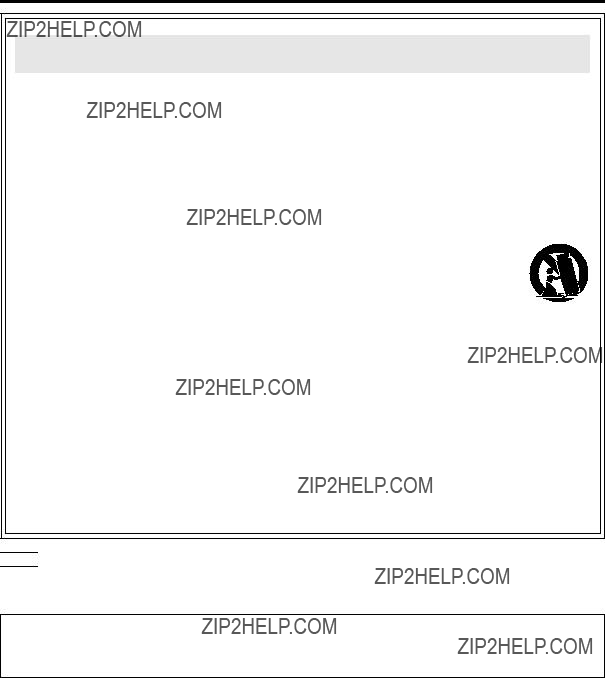
Safety precautions
IMPORTANT SAFETY INSTRUCTIONS
Read these operating instructions carefully before using the unit. Follow the safety instructions on the unit and the applicable safety instructions listed below. Keep these operating instructions handy for future reference.
1)Read these instructions.
2)Keep these instructions.
3)Heed all warnings.
4)Follow all instructions.
5)Do not use this apparatus near water.
6)Clean only with dry cloth.
7)Do not block any ventilation openings. Install in accordance with the manufacturer???s instructions.
other apparatus (including amplifiers) that produce heat.
9)Do not defeat the safety purpose of the polarized or
10)Protect the power cord form being walked on or pinched particularly at plugs, convenience receptacles, and the point where they exit from the apparatus.
11)Only use attachments/accessories specified by the manufacturer.
12)Use only with the cart, stand,
tripod, bracket, or table specified by the manufacturer, or sold with the apparatus. When a cart is used, use caution when moving the cart/apparatus combination to avoid injury from
13)Unplug this apparatus during lightning storms or when unused for long periods of time.
14)Refer all servicing to qualified service personnel. Servicing is required when the apparatus has been damaged in any way, such as


 indicates safety information.
indicates safety information.
<For
This product contains a CR Coin Cell Lithium Battery which contains Perchlorate Material ??? special handling may apply.
See www.dtsc.ca/gov/hazardouswaste.perchlorate.
3

Contents
4

Contents
5

Contents
6
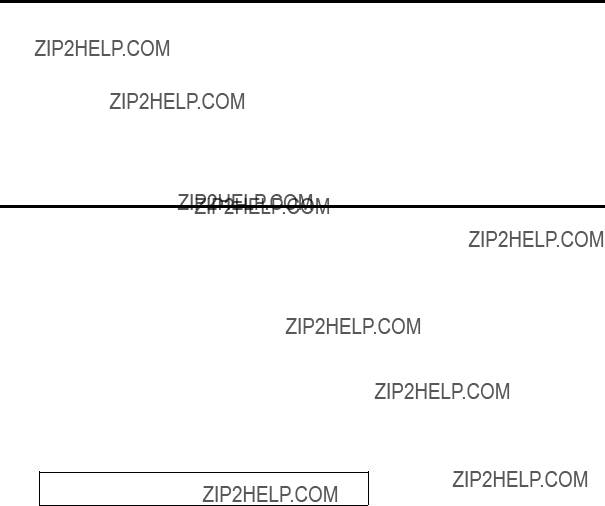
Description
This is a 1 ME digital video switcher which supports a multiple number of HD and SD formats. It consists of a mainframe and control panel.
Despite its compact dimensions of 2RU, the mainframe comes with 16 inputs and four outputs for SDI under the standard specifications.
It also supports two DVI outputs, and its video effects of one key line, two DSK lines, two PinP lines, two DVE (BKGD) lines, one DVE (key) line and two multi view lines enable video productions in a wide variety of forms. Incorporated in the switcher???s inputs are a frame synchronizer,
When the option boards are installed, a wider variety of input/output formats including analog composite, analog component and DVI can be accommodated so that systems can be constructed flexibly.
Features
Compact design, wide variety of input/output signals
???The mainframe, despite its compact dimensions of 2RU, comes with a wide variety of input/output facilities in the standard configuration.
As input facilities, a total of 16
The output facilities include four
???Two option slots each for input/output applications are provided.
When two option boards for input applications are installed, the maximum number of input signal lines can be expanded to 20; similarly, when two option boards for output applications are installed, the maximum number of output signal lines can be increased to 10.
Multiple formats supported
???The signal formats supported include HD formats (1080/59.94i, 1080/50i, 1080/24PsF ???1, 1080/23.98PsF ???1, 720/59.94p and 720/50p), SD formats (480/59.94i and 576/50i) and DVI ???2.
???1: The following option boards are not supported:
???2: The standard DVI output is the
The
Multi view display function
???Two multi view display function lines are provided under the standard specifications.
It is possible to divide up to 20 lines of video including program video (PGM), preview video (PVW) and input video signals between two screens and display them at the same time on two monitors.
Frame synchronizer system and external synchronization system supported
???A
???A genlock function is provided so that external synchronization systems using external sync signals (BB or TRI signals) as a reference are also supported.
7

Features
Many different effect functions incorporated
???Along with the standard wipe, mix and cut functions, the switcher can provide size reduction, slide and other DVE transitions.
???DVE transitions using the
???The unit comes with luminance keys and chroma keys provided as keyers as well as specialized hardware in the form of two DSK lines and two PinP lines as a standard option.
???AUX1 is equipped with a mix transition function.
This enables MIX transitions with the material selected next, allowing for a flexible system construction.
The Primatte?? algorithm, which has proven to be very popular in many
???Primatte?? is a registered trademark of IMAGICA DIGIX Inc.
???The copyrights of Primatte?? belong to IMAGICA DIGIX Inc.
???The patents for Primatte?? belong to IMAGICA DIGIX Inc.
SDHC memory cards supported
???Still image data (BMP, JPEG) can be imported from SDHC memory cards into the unit???s frame memories for use as background images or key materials.
In addition, the images and setting data in the unit???s frame memories can be stored on the SDHC memory cards.
???SDHC Logo is a trademark.
???Using the COM connector, a Panasonic
When a controller is used, up to five
Redundant power supply
???Under the standard specifications, a redundant power supply is provided so that live operations can be undertaken with complete peace of mind.
Simple operability
???Live transmissions can be delivered speedily thanks to the 16 crosspoint buttons and pattern selection buttons and other controls on the panel with its simple layout that enables various functions to be operated directly.
8

??? Option boards are installed in the two input/output option slots (slot A, slot B).
9

Precautions for use
??? Handle carefully.
Do not drop the product, or subject it to strong shock or vibration.
Do not carry or move the product by the fader lever. This is important to prevent trouble.
??? Use the product in an ambient temperature of 32 ??F to 104 ??F (0 ??C to 40 ??C).
Avoid using the product at a cold place below 32 ??F (0 ??C) or at a hot place above 104 ??F (40 ??C) because extremely low or high temperature will adversely affect the parts inside.
??? Power off before connecting or disconnecting cables.
Before plugging or unplugging the cables, be sure to switch power off.
??? Avoid humidity and dust.
Avoid using the product at a humid, dusty place because much humidity and dust will cause damage to the parts inside.
??? Maintenance
Wipe the product using a dry cloth. To remove stubborn dirt, dip a cloth into a diluted solution of kitchen detergent (neutral), wring it out well, and wipe the product gently. Then, after wiping the product with a moist cloth, wipe it again with a dry cloth.
Caution
???Avoid using benzine, paint thinners and other volatile fluids.
???If a chemical cleaning cloth is to be used, carefully read through the precautions for its use.
???Precaution to be observed during production
This product???s image switching and image effect functions can be used to produce images which flicker rapidly or images which change rapidly.
However, bear in mind when using these functions in production that the kinds of images produced may have an adverse effect on the viewer???s physical
??? Handling the optional boards
Be absolutely sure to turn off the power of the product before installing or removing any of the optional boards. Furthermore, when installing or removing the optional boards, take care not to hurt yourself on the edges and metal parts of the boards.
??? When the product is to be discarded
When the product is to be discarded at the end of its service life, ask a specialized contractor to dispose of it properly in order to protect the environment.
??? Concerning the consumable parts
Cooling fan:
This is a consumable part. As a general rule, replace it every 5 years or so (when the unit has been operated for 15 hours a day).
Power supply unit:
This is a consumable part. As a general rule, replace it every 5 years or so (when the unit has been operated for 15 hours a day).
The period when the consumable parts need to be replaced will differ depending on the operating conditions.
When the time comes to replace one of these parts, be absolutely sure to ask your dealer to do the job.
10

Precautions for use
Trademarks and Registered Trademarks
???Microsoft and Windows are either registered trademarks or trademarks of Microsoft Corporation in the United States and other countries.
???Adobe and Reader are either registered trademarks or trademarks of Adobe Systems Incorporated in the United States and/or other countries.
???SDHC logo is a trademark.
???Other names of companies and products contained in these operating instructions may be trademarks or registered trademarks of their respective owners.
Disclaimer of Warranty
IN NO EVENT SHALL Panasonic Corporation BE LIABLE TO ANY PARTY OR ANY PERSON, EXCEPT FOR
REPLACEMENT OR REASONABLE MAINTENANCE OF THE PRODUCT, FOR THE CASES, INCLUDING BUT
NOT LIMITED TO BELOW:
??????ANY DAMAGE AND LOSS, INCLUDING WITHOUT LIMITATION, DIRECT OR INDIRECT, SPECIAL,
CONSEQUENTIAL OR EXEMPLARY, ARISING OUT OF OR RELATING TO THE PRODUCT;
??????PERSONAL INJURY OR ANY DAMAGE CAUSED BY INAPPROPRIATE USE OR NEGLIGENT
OPERATION OF THE USER;
??????UNAUTHORIZED DISASSEMBLE, REPAIR OR MODIFICATION OF THE PRODUCT BY THE USER;
??????INCONVENIENCE OR ANY LOSS ARISING WHEN IMAGES ARE NOT DISPLAYED, DUE TO ANY
REASON OR CAUSE INCLUDING ANY FAILURE OR PROBLEM OF THE PRODUCT;
??????ANY PROBLEM, CONSEQUENTIAL INCONVENIENCE, OR LOSS OR DAMAGE, ARISING OUT OF THE
SYSTEM COMBINED BY THE DEVICES OF THIRD PARTY;
??????INCONVENIENCE, DAMAGE, OR LOSS RESULTING FROM ACCIDENTS CAUSED BY AN INADEQUATE
INSTALLATION METHOD OR ANYTHING OTHER THAN A DEFECT IN THE PRODUCT;
??????LOSS OF REGISTERED DATA CAUSED BY ANY FAILURE.
??????ANY DAMAGE OR CLAIMS DUE TO LOSS OR LEAKAGE OF IMAGE DATA OR SETTING DATA SAVED
ON THIS UNIT OR ON AN SD CARD OR PC.
11

1. Installation
Follow the instructions set forth in ???Safety precautions??? and also observe the cautionary items below.
Be absolutely sure to ask your dealer to do the jobs of installing and connecting the panel.
Connecting the power supply
???Be absolutely sure to use only the power cord and AC adapter supplied with the panel.
???Be absolutely sure to connect the grounding terminal of the power cord to ground.
Also connect the ground terminal (SIGNAL GND) at the rear of the panel to the system ground.
???If only one AC adapter is to be connected, place the
???To prevent the DC plug from being disconnected, secure the cable of the AC adapter to the cable clamp.
???When the control panel is not going to be used for a prolonged period of time, set its power switch to the ???off??? position to conserve power, and disconnect the power plug.
POWER
OFF
MAINFRAME
Cable clamp
Handle the control panel carefully!
??? Dropping the control panel or subjecting it to strong impact or vibration may cause trouble and/or malfunctioning.
Do not allow any foreign objects to enter inside the control panel!
???Allowing water, metal items, scraps of food or other foreign objects inside the control panel may cause a fire and/or electric shocks.
Choosing the best installation location
???This unit is designed for indoor use only.
???Install the unit on a sufficiently strong, stable and level surface for use.
???Ensure a space of at least 100 mm around the rear vents to avoid obstructing ventilation.
In particular, ensure sufficient space between ventilation and wiring when using mounted in a panel or table.
???Do not install the panel in a cold place where the temperatures will drop below 32 ??F (0 ??C) or in a hot place where the temperatures will rise above 104 ??F (40 ??C).
???Avoid installing the panel where it will be exposed to direct sunlight or to the hot air that is blown out from other products.
???Installing the panel in a very humid, dusty or vibration- prone location may give rise to trouble.
Ventilation holes
12

1. Installation
Comply with the instructions set forth in ???Safety precautions??? and also observe the cautionary items below.
Be absolutely sure to ask your dealer to do the jobs of installing and connecting the mainframe.
Connecting the power supply
???Be absolutely sure to use the power cord supplied with the mainframe.
???Be absolutely sure to connect the grounding terminal of the power cord to ground.
Handle the mainframe carefully!
??? Dropping the mainframe or subjecting it to strong impact or vibration may cause trouble and/or malfunctioning.
Do not allow any foreign objects to enter inside the mainframe!
???Allowing water, metal items, scraps of food or other foreign objects inside the control panel may cause a fire and/or electric shocks.
Choosing the best installation location
???This unit is designed for indoor use only.
???Mount the mainframe securely in a standard
???Install the mainframe securely using screws that are compatible with the rack.
???Be absolutely sure to attach the support guides used to support the back part of the mainframe. (Provide support guides that are compatible with the rack.)
???Provide sufficient clearances from the area around the ventilation holes at the front and the cooling fan at the back.
???Do not install the mainframe in a cold place where the temperatures will drop below 32 ??F (0 ??C) or in a hot place where the temperatures will rise above 104 ??F (40 ??C).
???Avoid installing the mainframe where it will be exposed to direct sunlight or to the hot air that is blown out from other products.
???Installing the mainframe in a very humid, dusty or
Support guides
OFFPOWER1
ON
 POWER1
POWER1
ALARM1OFFPOWER2
ON
 POWER2
POWER2
ALARM2







 HS450
HS450




 Live
Live
Multi
Switcher
13

1. Installation
The option boards are installed in the mainframe.
For details, refer to the operating instructions of the option board concerned.
Notes
???Be absolutely sure to ask your dealer to do the job of installing or removing the option boards.
???Before installing or removing an option board, turn off the power, and disconnect the power plug.
???Before coming into physical contact with the option board, touch your hand to metal that has been grounded to discharge the static electricity in your body.
A safe way to proceed is to wear an
The option board may be damaged if you touch the board with static still in your body.
???Avoid damage to the option board by not dropping it or subjecting it to strong shocks or vibrations.
???After removing an option board, be absolutely sure to attach the blank panel.
???When installing or removing an option board, take care not to hurt yourself on the edges or metal parts of the board.
??????Turn off the power of the mainframe, and disconnect the power cord.
??????Loosen the two screws of SLOT A or SLOT B at the back of the mainframe, and remove the blank panel.
SLOT A
SLOT B
 Blank panel
Blank panel
Screw
Screw
14
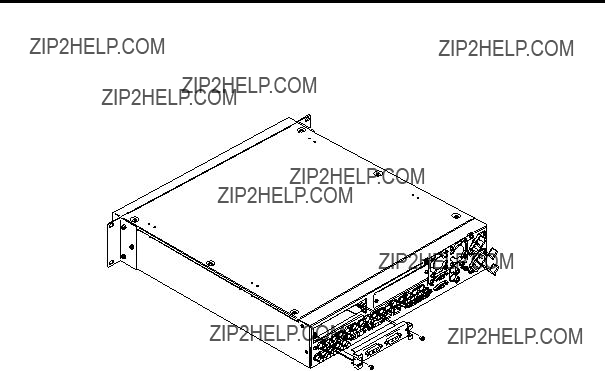
1. Installation
??????Align the option board with the guide rails, and insert it slowly.
Insert it until it will go no further. Take care not to exert excessive force while doing this since that may damage the connector inside.
??????Mount the option board in place using the two screws.
Clamping torque: 0.7 N???m
DVI
UTS
INP
DVI
Screw
Screw
??????After connecting the necessary cables, plug the power cord into the power outlet, and turn on the power.
15

1. Installation
???1: When external synchronization is selected as the reference signal setting, the reference signal is input. When internal synchronization is selected, the reference signal is output.
???2: When external synchronization is selected as the reference signal setting, the signals are looped through and output. When internal synchronization is selected, the reference signal is output.
???3: Two sets of the same output signals are distributed from
OUTPUT (SDI) 1.
???4: Connect the PANEL connector directly to the MAINFRAME connector using the supplied CAT5E cable.
???5: Do not connect to a public line when connecting a PC.
16
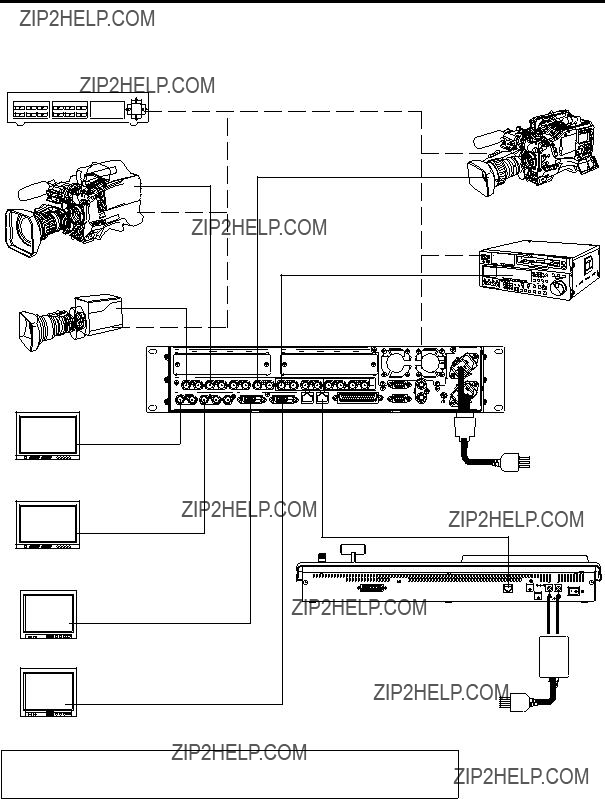
1. Installation
Sync Generator
HD camera
PC monitor
???When the unit is to be installed and when the connections are to be performed, be absolutely sure to ask your dealer to be responsible for carrying out the work that needs to be done.
???Use a
17

1. Installation
Example where the optional board is used
SLOT A: Analog Input Board
SLOT B:
PC monitor
18

2. Functions in each area
ON
???Power indicator [POWER]
This indicator lights when the power switch (???) on the rear panel is set to ON while power is supplied to the DC power input socket.
It goes off when the power switch (???) is set to OFF.
???Alarm indicator [ALARM]
This indicator lights when the mainframe???s cooling fan has stopped running or when there is a problem (voltage drop) with the power supply of the mainframe or the control panel.
When this occurs, an alarm message is displayed on the LCD and on the OSD screen of the external monitor. During the occurrence of an alarm, details of the trouble can be checked using the SYSTEM/Alarm menu. Alarm information can be output to an external device from the control panel???s TALLY/GPI connector (???).
??? For details, refer to
If the alarm goes off, stop using the unit immediately and be sure to contact your dealer. Continuing to use the unit even after the alarm goes off could damage it.
19

2. Functions in each area
???
???
???
???
???PGM/A bus crosspoint buttons [PGM/A 1 to 32]
These are used to select the PGM/A bus video signals.
Buttons 1 to 32 can be selected using the [SHIFT] button.
??? Refer to
In the case of the
When one of the crosspoint buttons (???, ???, ???) is held down, the name of the input material and the number of the crosspoint button are displayed.
???PST/B bus crosspoint buttons [PST/B 1 to 32]
These are used to select the PST/B bus video signals. Buttons 1 to 32 can be selected using the [SHIFT] button.
??? Refer to
In the case of the
???AUX bus selector buttons [KEY, PinP 1/2, DSK 1/2, AUX1 to AUX4]
Select the bus to be operated using the AUX bus crosspoint buttons (???). The selected button lights.
[KEY]:
This button is used to change the AUX bus crosspoint buttons (???) into the selector buttons for the sources of the key fill buses.
The source for the key source bus can be set using the menu displayed when the AUX bus crosspoint buttons (???) are held down. The set source will be the same for DSK1 and DSK2.
The source can also be set from the CONFIG menu.
[PinP 1/2]:
This button is used to change the AUX bus crosspoint buttons (???) into the selector buttons for the sources of the PinP buses.
Each time it is pressed, its target is switched between PinP1 and PinP2.
When PinP1 is selected, the button lights in amber; when PinP2 is selected, it lights in green.
[DSK 1/2]:
This button is used to change the AUX bus crosspoint buttons (???) into the selector buttons for the sources of the DSK fill buses.
Each time it is pressed, its target is switched between DSK1 and DSK2.
When DSK1 is selected, the button lights in amber; when DSK2 is selected, it lights in green.
[AUX1] - [AUX4]:
These buttons are used to change the AUX bus crosspoint buttons (???) into the selector buttons for the sources of the AUX buses.
The AUX bus selector buttons are also used as the menu function buttons (???).
20

2.Functions in each area
???AUX bus crosspoint buttons
These buttons are used to select the source of the bus which was selected by the AUX bus selector button (???). Buttons 1 to 32 can be selected using the [SHIFT] button.
??? Refer to
??? ??? ???
???Wipe pattern and memory selector buttons
Wipe patterns 1 to 12 can be selected while the BKGD and KEY pattern selector buttons (???) are lighted.
Data can be stored in the memories of buttons 1 to 10 or recalled from these memories while one of the memory operation buttons (???) ??? [SHOT MEM], [BKGD WIPE MEM], [PinP MEM] or [CAM MEM] ??? is lighted.
MEMORY / PATTERN
???BKGD, KEY pattern selector buttons [BKGD PATT] [KEY PATT]
Press the [BKGD PATT] button, and while it is lighted, select the wipe pattern for the background transition. Similarly, press the [KEY PATT] button, and while it is lighted, select the wipe pattern for the key transition. Each time the [BKGD PATT] button and [KEY PATT] button are pressed, the pattern page changes in the following sequence: WIPE, SQ1 (squeeze 1), SL1 (slide 1), 3D1 (3 dimensions 1), SQ2 (squeeze 2), SL2 (slide 2) and 3D2 (3 dimensions 2). Which pattern page has been selected can be checked by observing which pattern page indicator LED (???) is lighted.
SQ2, SL2, and 3D2 may not be selected as the wipe pattern for the key transition.
???Pattern page indicator LEDs [PAGE]
By observing which pattern page indicator LED is lighted, it is possible to check which pattern page has been selected by the BKDG PATT or KEY PATT selector button (???).
???Memory operation buttons [SHOT MEM] [BKGD WIPE MEM] [PinP MEM] [CAM MEM] [STOR] [RECALL] [DEL] [UNDO]
Press the [SHOT MEM], [BKGD WIPE MEM], [PinP MEM] or [CAM MEM] button to perform the memory operations for the number keys (1 to 10).
[STOR]:
Press this to register data in the memory.
[RECALL]:
Press this to recall data from the memory.
[DEL]:
Press this to delete data in the memory.
[UNDO]:
Press this to undo the operation of the [RECALL] or [DEL] button. The number of operations that can be undone is one only.
This operation cannot be performed using memory operations when the [CAM MEM] button has been pressed.
21
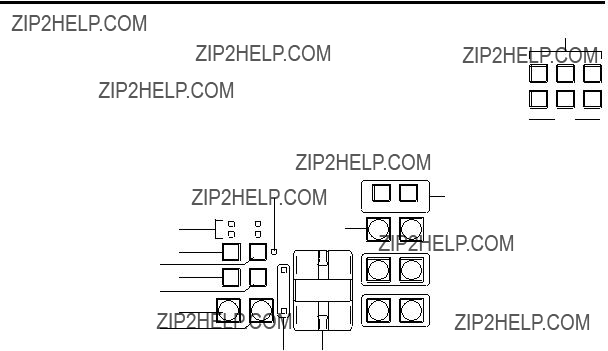
2. Functions in each area
???User buttons [USER1 to USER6]
These are used to assign some functions of the menu settings to the [USER1] to [USER6] buttons on the CONFIG menu.
??? See
???
USER
???
??????
???

 ???
???

 ???
???

 ???
???
???[BKGD] button
This executes the background transition when the [AUTO] button (???) or fader lever (???) has been operated. When the [BKGD] button is pressed and it is selected, its indicator lights in amber.
If the [KEY] button (???) is now pressed, the indicator goes off, and the
???[KEY] button
This executes the key transition when the [AUTO] button (???) or fader lever (???) has been operated. When the [KEY] button is pressed and it is selected, its indicator lights in amber.
If the [BKGD] button (???) is now pressed, the indicator goes off, and the
???KEY ON tally LED
This lights in red when the key ON status is established.
???MIX, WIPE selection status tally LEDs
These light up to indicate whether MIX or WIPE has been selected when background transitions or key transitions are executed.
22

2.Functions in each area
???[MIX] button
This is used to switch the A and B bus images while making them overlap. During the transition, the A and B bus output total is kept at 100 %.
When the [MIX] button is pressed and it is selected, its indicator lights in amber.
If the [WIPE] button (???) is now pressed, it goes off, and the
???[WIPE] button
This is used to execute the transition using the pattern selected by the wipe pattern selector button (???). When the [WIPE] button is pressed and it is selected, its indicator lights in amber.
If the [MIX] button (???) is now pressed, it goes off, and the
???[AUTO] button
This is used to automatically execute transitions (auto transition) using the transition time which has been set on the TIME menu.
During auto transition its indicator lights in amber. When the button is pressed again during auto transition, the auto transition operation is suspended, and the indicator lights in green. When it is pressed again while auto transition is suspended, the remaining transition is executed.
The indicator goes off when auto transition is completed.
When the [AUTO] button is pressed while the fader lever (???) is at an interim setting, the transition is executed in the time remaining from the interim setting.
???[CUT] button
This button is used to execute transitions instantly.
Its indicator lights in amber during a transition, and it goes off when the transition is completed.
???[KEY ON] button
This button is used to execute the key transition for the transition time which has been set on the TIME menu.
???[FTB ON] button
This button is used to execute
???PinP button [PinP1 ON] [PinP2 ON]
This button is used to execute
???DSK button [DSK1 ON] [DSK2 ON]
This button is used to execute
23

2.Functions in each area
???Wipe direction selection buttons [WIPE DIRECTION N/R, R]
These buttons are used to select the direction in which to wipe for executing background transitions.
When the [R] indicator is off:
Wiping proceeds in the normal direction.
When the [R] indicator is lighted:
Wiping proceeds in the reverse direction.
When the [N/R] indicator is lighted:
The normal direction is replaced with the reverse direction (or vice versa) when the transition is completed. (The lighted and extinguished statuses of the [R] button are also switched in line with the direction of the wiping.)
???Fader lever
This is used to execute background or key transitions. When it is moved as far as it will go, the transition is completed. When it has been operated during auto transition, auto transition will be switched to manual operation as soon as the fader position overtakes the amount of the transition being executed.
???Bus tally LEDs
These indicate the output statuses of the A bus and B bus. The LED corresponding to the bus whose program signals (PGM) are being output lights.
24
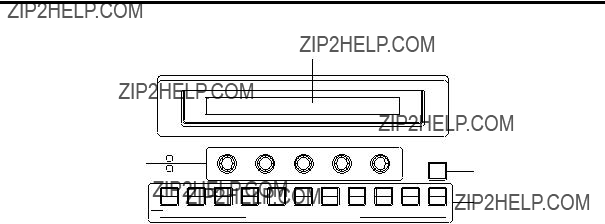
2. Functions in each area
???
 AMBER:1 / GREEN :2
AMBER:1 / GREEN :2 
MENU FUNCTION / AUX BUS DELEGATION
???LCD
The setting menu is displayed when one of the menu function buttons (???) is pressed.
When the buttons listed below are
The operation corresponding to the button pressed is also executed.
<List of menu delegation functions>
25
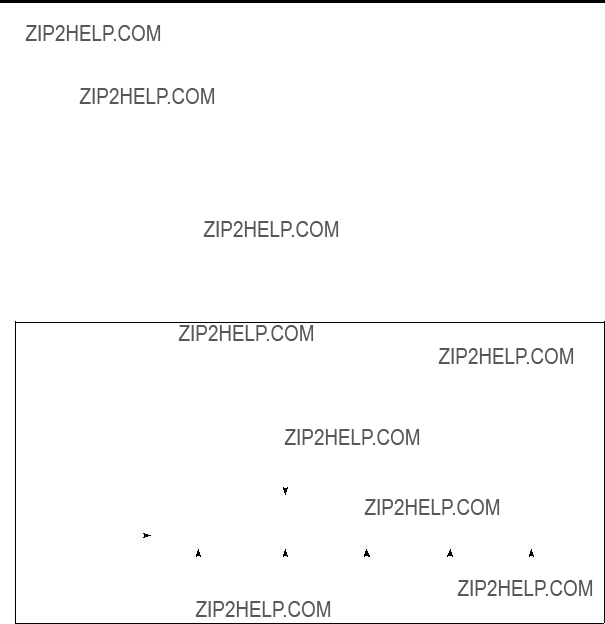
2.Functions in each area
???Menu function buttons [MENU FUNCTION/AUX BUS DELEGATION]
These are used to select the menus organized by function.
Each time one of these buttons is pressed, the menu for its function is switched between the one displayed above and the one displayed below. Each time the [PinP1/PinP2] button or [DSK1/DSK2] button is pressed, the color used for their lighting is switched between amber and green. The other buttons light in amber.
???Rotary encoders [F1] to [F5]
These are used to set the parameters displayed on the menus (LCD screen or
[F1]: Rotate this rotary encoder to switch the sub menu.
On the INPUT menu or OUTPUT menu, the signal to be set is switched. [F2]: Turn this rotary encoder to set the parameters.
On the INPUT menu or OUTPUT menu, the third menu is switched.
[F3] to [F5]: Rotate these rotary encoders to set the parameters.
When the down arrow (???) is shown at a menu item, its parameter is set by pressing the corresponding rotary encoder.
When the parameter is one which is set using a numerical value, its default will be restored when the rotary encoder is held down.
(However, the network settings and the date and time settings will not be returned to the defaults.)
Basic menu operations
For detailed operations, refer to the sections in ???3. Basic operations???.
For the menu configurations, refer to ???8. Setting menu table???.
??????Select the menus organized by function using the menu function buttons (???).
??????Using the rotary encoders (???), display the sub menu that will be used to establish the detailed settings, and set the parameters.
??? The INPUT menu and OUTPUT menu differ depending on whether an option board has been installed.
???[HOLD] button
If the [HOLD] button is pressed while a menu is displayed, no other menu will be selected even when a menu function button (???) is pressed.
In addition, even if the AUX bus selection button (???) is pressed it will not switch to another bus. While the [HOLD] button is held down, it lights in amber.
26

2. Functions in each area
???Positioner [X/Y]
These are used when performing the settings below.
???PinP1, PinP2 position settings
???Wipe start position setting (WIPE #5, WIPE #11, SQ #5)
???Camera control
???Flying key position setting
???Chroma key marker position setting
???
Z
???
POSITIONER
In each case, the settings take effect only when the following menu items have been selected.
Note
The center values of the positioner are set during the time it takes for the unit to start up after its power is turned on. Do not operate the positioner until after the switcher has started up.
???Rotary encoder [Z]
This is used to set the PinP size, flying key size or to select the chroma key area.
In each case, the settings take effect only when the following menu items have been selected.
27

2. Functions in each area
???SD memory card slot
Insert an SD memory card (purchased separately) or an SDHC memory card (purchased separately) into this slot.
???SD memory card access LED
This LED lights while the data on the SD memory card is being accessed.
Do not turn off the unit???s power or eject the SD memory card while the access LED is lighted. Doing so can damage the data on the SD memory card.
Concerning the recommended SD memory cards and SDHC memory cards
Use of the following SD memory cards and SDHC memory cards made by Panasonic is recommended:
SDHC memory cards
SD memory cards
28

2. Functions in each area
??????
??? ??? ??? ??????
???TALLY/GPI input/output connector [TALLY/GPI]
??? For details on how to connect this connector, refer to ???6. External interfaces???.
???MAIN FRAME connector [MAIN FRAME]
Connect this to the mainframe using the supplied CAT5E cable (STP, straight, 10 m).
???DC power input sockets [12V 

 IN1], [12V
IN1], [12V 

 IN2] (DC 12 V, 0.8 A)
IN2] (DC 12 V, 0.8 A)
Connect the supplied AC adapters (for the control panel) to these sockets.
???Ground connector [SIGNAL GND]
Connect to the system???s earth ground.
???Power switch [POWER]
This is used to turn the power on and off.
???SERVICE switch [NORMAL/SERVICE]
This switch is used for maintenance purposes.
For normal operations, select the ???NORMAL??? position.
???LCD CONTRAST adjustment screw
This is used to adjust the contrast of the LCD display.
29

2. Functions in each area
POWER1
OFF ON
POWER1
ALARM1
???
??? ???
???Power switch [POWER1, POWER2]
These are used to turn the power on and off.
As a standard feature, this mainframe has a redundant power supply system.
To turn off the power, set the power switches of both system 1 (POWER1) and system 2 (POWER2) to OFF.
???Power indicator [POWER1, POWER2]
This indicator lights when the power switch (???) is set to ON while power is supplied to the AC power input socket.
It goes off when the power switch (???) is set to OFF.
???Alarm indicator [ALARM1, ALARM2]
These light when the mainframe???s cooling fan has stopped running or when there is a problem (voltage drop) in the power supply. When this occurs, an alarm message is displayed on the control panel???s LCD and on the OSD screen of the external monitor.
During the occurrence of an alarm, details of the trouble can be checked using the SYSTEM/Alarm menu.
The alarm information can be output to an external device from the TALLY/GPI connector (???) of the mainframe.
??? For details, refer to
If the alarm goes off, stop using the unit immediately and be sure to contact your dealer. Continuing to use the unit even after the alarm goes off could damage it.
30

2. Functions in each area
???SDI signal input connectors [SDI INPUTS 1 to 16]
9 to 16: The color collector function can be used.
13 to 16:The
???Option slot [SLOTA] (IN/OUT A1, IN/OUT A2)
???Option slot [SLOTB] (IN/OUT B1, IN/OUT B2)
Each of these is an input/output option slot.
A DVI input board, analog output board or other option board can be installed in these slots.
For details, refer to
???SDI signal output connectors [SDI OUTPUTS 1 to 4]
1 to 4: These can be allocated by the menus.
??? Two sets of the same output signals are distributed from the OUTPUT1 connector.
These can be allocated by the menus.
??? The
???Reference input connector/BB output connector [REF]
BB signals output from both connectors in the internal sync mode.
<In the external synchronization mode>
External synchronization signal input
REF




Input the external synchronization signal to the upper of the two connectors shown above.
???PANEL connector [PANEL]
Connect this to the control panel using the supplied CAT5E cable (STP, straight, 10 m).
31

2.Functions in each area
???LAN connector [LAN]
???For details on how to connect this connector, refer to ???6. External interfaces???.
???EDITOR connector [EDITOR]
???For details on how to connect this connector, refer to ???6. External interfaces???.
???TALLY/GPI input/output connector [TALLY/GPI]
??? For details on how to connect this connector, refer to ???6. External interfaces???.
???Ground connector [SIGNAL GND]
Connect to the system???s earth ground.
???AC power input socket [ IN1] [ IN2] (AC 100 V to 120 V, 50/60 Hz)
Connect one end of the supplied power cable to this socket and the other end to the AC outlet.
The supplied power cable comes with a
If a
???Cooling fan
32

3. Basic operations
Press one of the crosspoint buttons to select the material to be used for the background transition. Depending on the operating status, the button pressed will light in one of two colors.
Lighting in red: When the selected input signals are output to PGM. (However, the indicator lights in amber during FTB operations.)
Lighting in green: When the selected input signals are not output to PGM.
AUX
 Lighting in red
Lighting in red  Lighting in green
Lighting in green
Furthermore, when one of the crosspoint buttons is held down, the name of the input material and number of the button corresponding to the pressed button are displayed on the LCD.
The SHIFT function enables two materials to be allocated ??? the front material and the rear material ??? to one button, and the materials to be selected using the [SHIFT] button.
A total of 32 materials ??? front materials (1 to 16) and rear materials (17 to 32) ??? can be allocated to the three groups of 16 crosspoint buttons whether these buttons are the PGM/A bus crosspoint buttons, PST/B bus crosspoint buttons or AUX bus crosspoint buttons.
There are actually two SHIFT functions: ???All SHIFT??? for switching all the front materials to the rear materials or vice versa, and ???Single SHIFT??? for switching the front material of one crosspoint button with its rear material or vice versa.
???All SHIFT??? works once the SHIFT function has been allocated to one of the USER buttons.
???Single SHIFT??? works once the SHIFT function has been allocated to the No.16 or No.1 crosspoint button of the crosspoint button group concerned by a menu operation.
33

3. Basic operations
All SHIFT
All SHIFT is used to switch all the materials of the PGM/A bus crosspoint buttons, PST/B bus crosspoint buttons or AUX bus crosspoint buttons from front materials to rear materials or vice versa.
The USER button to which the SHIFT function has been allocated is used to switch between the front materials and rear materials.
??????Allocate the SHIFT function to one of the USER buttons.
For the method used to allocate this function to the USER button, refer to
??????Each time the [SHIFT] (USER) button is pressed, the front materials are switched to the rear materials or vice versa.
???When the rear materials (17 to 32) have been selected, the [SHIFT] (USER) button lights in amber.
???When the button is pressed again, it goes off, and the front materials (1 to 16) are now selected.
Single SHIFT
Single SHIFT is used to switch the material of a PGM/A bus crosspoint button, PST/B bus crosspoint button or AUX bus crosspoint button from a front material to a rear material or vice versa.
Switching between the front material and rear material is done using the crosspoint button (No.16 or No.1) in which the SHIFT function is allocated.
??? Allocating the SHIFT function
??????Press the [XPT] button to light its indicator, and display the XPT menu.
??? Refer to
<Menu display>
34

3. Basic operations
??????Turn [F4] to select the button to which the SHIFT function is to be allocated using the Shift item.
Right: Button No.16
Left: Button No.1
Off: Function is not allocated.
??????Turn [F5] to select the operation to be performed when the [SHIFT] button is pressed using the
Off:The rear material is selected only while the [SHIFT] button is pressed.
On: The front material and rear material are switched each time the [SHIFT] button is pressed.
???To use the materials that have been set in the button to which the SHIFT function is allocated, either set the SHIFT function off or allocate the SHIFT function to another button.
???If a rear material has been selected regardless of whether the
When PGM/PST is selected as the bus mode setting or when the bus has been switched by a transition, the SHIFT status will also be switched.
???If the [SHIFT] button for ???Single SHIFT??? is pressed when the rear materials (17 to 32) have been selected using ???All SHIFT???, the bus crosspoint buttons concerned will be switched to the front materials.
???When a crosspoint button is held down, the input material allocated to the pressed button is displayed on the LCD.
When the [SHIFT] button is held down, ???Shift??? is displayed on the LCD.
35

3. Basic operations
Select the A/B bus system or
??????Press the [CONFIG] button to light its indicator, and display the CONFIG menu. ??? Refer to
??????Turn [F1] to display the Operate sub menu.
??????Turn [F2], and select the A/B or PGM/PST
<Menu display>
CONFIG
With the
36

3. Basic operations
Press the [BKGD] button in the transition area so that its indicator lights in amber.
When the [BKGD] button and [KEY] button are pressed at the same time, both buttons are selected.
Use the [MIX] and [WIPE] buttons in the transition area to select the background transition mode. The indicator of the selected button lights in amber.
Operate the fader lever to execute transitions manually.
If the fader lever has been operated during auto transition, auto transition will be switched to manual operation as soon as the fader position overtakes the amount of the transition being executed.
The bus tally LEDs on the left of the fader lever indicate the program bus output status.
Top LED only lights: PGM/A bus output
Top and bottom LEDs light: during the transition
Bottom LED only lights: PST/B output
???When the [AUTO] button is pressed, the transition is executed automatically using the transition time which has been set.
???When the [AUTO] button is pressed while the fader lever is at an interim setting, the transition is executed in the time remaining from the interim setting.
???The auto transition time is set using the TIME menu.
??????Press the [TIME] button to light its indicator, and display the TIME menu. ??? Refer to
??????Turn [F1] to display the BKGD sub menu.
??????Turn [F4] to select the display unit using the Unit item.
??????When frames (Frame) have been selected as the unit, turn [F3] to set the transition time.
??????When seconds (Sec) have been selected as the unit, turn [F2] to set the second units or [F3] to set the frame units.
<Menu display>
???Any time from 0 to 999f can be set. The time which can be set when seconds are used as the display unit differs depending on the video format.
59.94i: max. 33s09f, 59.94p: max. 16s39f, 50i: max. 39s24f, 50p: max. 19s49f,
24psf: max 41s15f, 23.98psf: max 41s15f
When the [CUT] button is pressed, the transition is executed instantly.
37

3. Basic operations
Three effects ??? paint,
??????Press the [IMAGE A] button (or the [IMAGE B] button) to light its indicator, and display the IMAGE A (or IMAGE B) menu.
??? Refer to
??????Turn [F2], and set the IMAGE effect to On or Off. To add the IMAGE effect, set to On.
<Menu display>
On
??????Turn [F1] to display the menu (Paint, Mono, Mosa/Def sub menu) of the effect that is to be set.
<Menu display>
IMAG A 2|On/Off
359.9100.0
??????Turn [F2], and set On or Off using the sub menu concerned.
??????Turn [F3] and [F4], and change the effect setting.
???Executing the transition when the PGM/PST
38

3. Basic operations
While the IMAGE effect is set to On, the crosspoint button with the bus material to which the IMAGE effect has been added now blinks.
The IMAGE effects are created as DVEs (digital video effects) so their output is delayed by one frame from the normal output.
Even when the IMAGE effect has been set to On only for the PGM/A bus or PST/B bus, the effects of both buses will be output with a
39
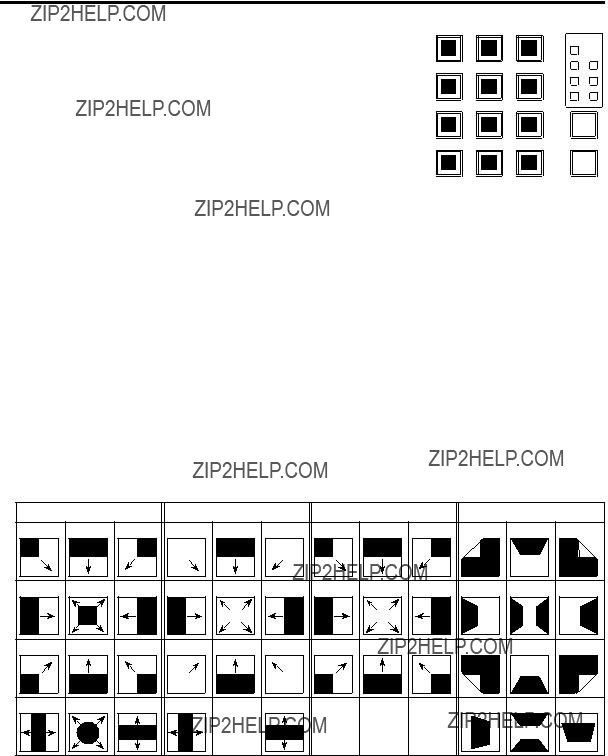
3. Basic operations
Based on the wipe patterns allocated to 12 buttons, this unit has 7 pages of background transition patterns and 4 pages of key transition patterns. (???Refer to ???Table of wipe patterns???.)
The images and number of the basic wipe patterns are displayed on the wipe pattern selector buttons.
MEMORY / PATTERN
<How to select the wipe patterns>
??????Press the [BKGD PATT] button or [KEY PATT] button to select the pattern page.
Each time the button is pressed, the page is switched, and the selected PAGE LED lights.
??????Select the button from among the 12 wipe pattern selector buttons for which the number of the pattern concerned is indicated.
The selected pattern lights, and a wipe pattern image appears on the external monitor (OSD).
The pattern page indicator LEDs light only when the [BKGD PATT] button or [KEY PATT] button has been selected.
??? Table of wipe patterns
??? Key transition pattern pages
40

3. Basic operations
??? Background transition pattern pages
41

3. Basic operations
On the 3D2 (3 dimensions 2) pattern page, a still image in one of the frame memories
??????Press the [BKGD] button to light its indicator, and display the BKGD menu. ??? Refer to
??????Turn [F1] to display the Base sub menu.
<Menu display>
??????Turn [F2] to set the image to be used for the background using the Type item.
???The background that has been set takes effect when ???3D2??? is selected on the pattern page of the background transitions.
Operate the wipe direction selector buttons to select the wipe direction for the background transition.
(The key transitions are set by the menu. The direction which is set here will not be reflected. ??? See
When the [R] indicator is off:
Wiping proceeds in the normal direction.
When the [R] indicator is lighted:
Wiping proceeds in the reverse direction.
When the [N/R] indicator is lighted:
The normal direction is replaced with the reverse direction (or vice versa) when the transition is completed.
(The lighted and extinguished statuses of the [R] button are also switched in line with the direction of the wiping.)
42

3. Basic operations
A border effect or soft effect can be added to the wiping of background transitions.
Setting the border and soft effect
??????Press the [BKGD] button to light its indicator, and display the BKGD menu. ??? Refer to
<Menu display>
??????Turn [F1] to display the Border sub menu.
??????Turn [F2] to set On (or Off) for the border using the Border item.
??????Turn [F3] to set the width of the border using the Width item.
??????Turn [F4] to set the amount of soft effect using the Soft item.
When ???On??? has been selected as the Border item setting, the ratio of the soft effect to the border width is indicated as the amount of soft effect.
When only the soft effect is to be added to wipe, select ???Off??? as the Border item setting.
Setting the border color
??????On the BKGD menu, turn [F1] to display the BodrCol sub menu.
<Menu display>
0.00.0 0.0 Yellow
359.9100.0 108.0 Green
Magenta
Red
Blue
Black
??????Turn [F2], [F3] and [F4] to adjust the Hue, Sat and Lum of the border color.
??? To call the preset color
Turn [F5] to select the preset color using the Load item, and press the [F5] switch.
The Hue, Sat and Lum values are changed to the preset color values.
??? To save the values that were set before calling the preset color, refer to
43

3. Basic operations
Any start position can be set for WIPE patterns No.5 and No.11 and for SQ pattern No.5 among the wipe patterns. For WIPE patterns No.5 and No.11, the position is set using the WIPEPos sub menu of the BKGD menu.
For SQ pattern No.5, it is set using the SQPos sub menu of the BKGD menu.
??????Press the [BKGD] button to light its indicator, and display the BKGD menu. ??? Refer to
??????Turn [F1] to display the WIPEPos sub menu or the SQPos sub menu.
<Menu display>
100.0100.0
100.0100.0
??????Either operate the positioners or turn [F2] and [F3] to set the wipe start position using the
These settings can be established only when WIPE or SQ #5 has been selected as the background pattern or key pattern.
??????Either operate the fader lever or press the [AUTO] button to check the wipe operation.
(When, for instance,

 Inside screen area
Inside screen area
Outside screen area
??????To copy the start position settings, press [F5].
The copy destination appears under the CopyTo item. (It will not change even if [F5] is turned.)
44

3. Basic operations
Setting the lighting effect
Lighting effects can be added when the following wipe patterns have been selected: 3D1 page: #1, #3, #7, #9
These effects can be set for background transitions and key transitions.
??? For background transitions
??????Press the [BKGD] button to light its indicator, and display the BKGD menu. ??? Refer to
??????Turn [F1] to display the Modify sub menu.
<Menu display>
??????Turn [F2] to select whether the lighting effect at the time a background transition is executed is to be added using the Light item.
On: The lighting effect is added.
Off:The lighting effect is not added.
??? For key transitions
??????Press the [KEY] button to light its indicator, and display the KEY menu.
??????Turn [F1] to display the Modify sub menu.
<Menu display>
On 

??????Turn [F2] to select whether the lighting effect at the time a key transition is executed is to be added using the Light item.
On: The lighting effect is added.
Off:The lighting effect is not added.
45

3. Basic operations
Setting the trimming
When SQ1, SQ2, SL1, SL2, 3D1 or 3D2 has been selected as the wipe pattern, the trimming at the time a background transition is executed can be set.
The ???4:3??? and ???4:3Smth??? settings for the Trim item take effect when the HD format has been selected as the system format setting.
??????On the BKGD menu, turn [F1] to display the Modify sub menu.
<Menu display>
??????Turn [F3] to set the trimming operation and transition operation using the Trim item.
16:9 (On): For trimming the edges around the material.
This setting is used when a black border, for instance, can be seen around the material. When HD has been selected as the system format setting, ???16:9??? is displayed on the menu, but when SD has been selected as the system format setting, ???On??? is displayed on the menu.
4:3: For trimming using the 4:3 aspect ratio and releasing the trimming when the transition is completed.
4:3Smth: For trimming using the 4:3 aspect ratio and executing the transition to 16:9 images smoothly.
Off: No trimming
??????Turn [F4] to select the setting for automatic trimming (4:3 or 4:3Smth) in accordance with the material using the 4:3Auto item.
Off:All input materials are targeted for automatic trimming.
On: Using the
46

3. Basic operations
This operation combines the background image with another image. The key definition can be adjusted, and an edge can be added to the combined image.
Also available as materials besides KEY for combining with the background image are PinP (picture in picture) and DSK (downstream key). The figure below shows their priorities.
<Key, PinP and DSK priorities>
Background image
KEY
PinP
DSK
How key combinations work is shown in the figure below.
<How key composition works>
Key fill
47

3. Basic operations
??????Press the [KEY] button to light its indicator, and display the KEY menu. ??? Refer to
??????Turn [F1] to display the KEY sub menu.
??????Turn [F2] to select the Type item.
<Menu display>
Lum (luminance key/self key):
This is for creating the key signals from the luminance component or luminance and chroma component of the key fill signal.
Linear (linear key/EXT key):
This is for creating the key signals from the luminance component of the key source signal. It is used when the key source signal and key fill signal are different.
Chroma (chroma key/self key):
This is for creating the key signals using a specific hue of the key fill signal as the reference.
Full (full key/self key):
This is for creating the key signals using the images on the full screen as the key source signals. PinP combinations are possible in conjunction with the flying key. ??? See
Since the luminance and chroma keys are operated as self keys, the key fill signals are used as the key source signals. For the full key, the images on the full screen are used as the key source signals. When the luminance key, chroma key or full key has been selected as the key type, the key signals will remain unchanged even when the key source signals are switched.
When using the linear key, use material with a black background and white characters or shape to be combined by the key as the key source signal. Material which is not black and white may not be combined clearly.
Material with a white background and black characters, etc. can be reversed using the key invert function for use.
??????When the luminance key has been selected, the chroma component can be included in the generation of the key signals in view of the self key application. (This does not apply to the linear key.)
Turn [F3], and select the setting using the LumKey item.
ChrmOn: In addition to the luminance component, the chroma component is also taken into account in the generation of the key signals.
This is the setting for using a color with a low luminance component for the key signals (such as when defining blue characters).
ChrmOff: The key signals are generated from only the luminance component.
??????Turn [F4] to select the fill type using the Fill item.
Bus: The bus signal is used for the key fill signal.
Matte: The internal fill matte is used for the key fill signal.
48

3. Basic operations
Selecting the key fill signal
Press the [KEY] button among the AUX bus selector buttons to light its indicator, and press one of the AUX bus crosspoint buttons 1 to 32 to select the key fill signal.
Selecting the key source signal
On the CONFIG menu, set the key source for key fill.
This setting is the same for KEY and DSK.
???Setting with AUX bus crosspoint buttons
??????Press the [KEY] button (or [DSK 1/2] buttons) of the AUX bus selector buttons to light its indicator, and hold down the AUX bus crosspoint button for the selected key fill signal.
<Menu display>
??????Turn the [F5] and select a key source signal (SRC) for the key fill signal (FILL), and press the [F5] switch.
???Setting in the CONFIG menu
??????Press the [CONFIG] button to light its indicator, and display the CONFIG menu. ??? Refer to
??????Turn [F1] to display the KSAsign sub menu.
<Menu display>
IN1~16 IN1~16
CBGD CBGD
CBAR CBAR
FMEM1~4 FMEM1~4
NoAsign
??????Turn [F2] to select the key fill material using the Fill item.
??????Turn [F3] to select the key source material using the Source item, and press the [F3] switch.
The luminance and chroma keys are used as self keys so the key fill signal can be used as the key source signal regardless of the menu setting.
49
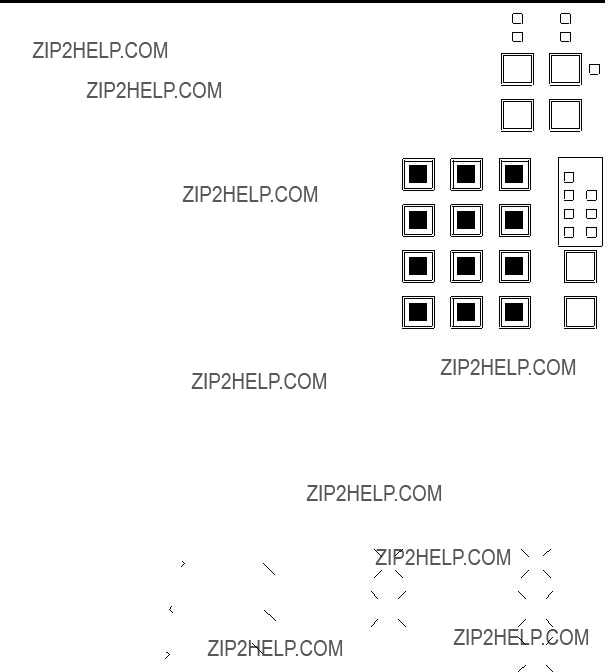
3. Basic operations
??????Select the transition mode.
Press the [KEY] button in the transition area to light its indicator. To execute a background transition and key transition at the same time, press the [BKGD] button and [KEY] button together to turn on both indicators.
??????Select the transition type.
Use the [MIX] button or [WIPE] button in the transition area to select the key transition mode.
The selected button lights in amber, and the MIX or WIPE status indicator LED depending on the selected mode lights.
If WIPE has been selected, press the [KEY PATT] button in the wipe pattern/memory area to light its indicator, and select the wipe pattern.
??????Set the time of the transition.
On the TIME menu, turn [F1] to display the KEY sub menu. As with a background transition, set the transition time.
10 XPT DSBL EFF DSLV
MEMORY / PATTERN
??????Set the wipe direction.
On the KEY menu, turn [F1] to display the Trans sub menu.
Turn [F1] to set Nor (normal) or Rev (reverse) using the OutPatt item.
Nor (normal): The key out pattern moves in the same direction as the key in pattern.
Rev (reverse): The key out pattern moves in the opposite direction from the key in pattern.
<Pattern examples>
 : This indicates the areas where keys are combined.
: This indicates the areas where keys are combined.
???The operations shown in pattern example 3 are performed for WIPE 5, 10, 11 and 12.
???The operations shown in pattern example 4 are performed for SQ 5, 10 and 12 and for 3D1 5, 10, 11 and 12, and the same operations are performed for normal and reverse.
50

3. Basic operations
??????Execute the transition.
Press the [AUTO] button in the transition area to automatically execute the transition at the transition time that has been set.
Alternatively, execute the transition manually by operating the fader lever.
Key auto transition
When the [KEY ON] button in the transition area is pressed, the transition is automatically executed at the transition time that has been set.
During key in, the indicator of the [KEY ON] button blinks in red, and it lights in red when the transition is completed.
If the [KEY ON] button is pressed with the picture completely keyed in, the Key image transition (key out) is executed.
During key out, the indicator of the [KEY ON] button lights in red, and it goes off when the transition is completed.
If the [KEY ON] button is pressed during the transition, the transition direction is reversed.
Key preview images can be output to the preview output, and the keys can be adjusted and checked.
??????On the KEY menu, turn [F1] to display the KEY sub menu.
??????Turn [F5] to set the preview mode using the PVW item.
On: An image with key effects added is output to the preview output.
Off: An image with no key effects added is output to the preview output.
Auto: The preview image of the next transition is output to the preview output.
51

3. Basic operations
These steps are taken to adjust the luminance key and linear key definition.
??????Press the [KEY/CKEY] button to light its indicator, and display the KEY menu. ??? Refer to
??????Turn [F1] to display the Adjust sub menu.
<Menu display>
??????Turn [F2], [F3] and [F4] to adjust the key definition.
??????Turn [F5] to set key invert.
When On is selected, the key signals to be generated internally are inverted.
52

3. Basic operations
Sampling is executed for the selected key materials to adjust those aspects of the key that are to be compensated.
Step 1
???To execute the sampling automatically
??????Press the [KEY/CKEY] button to light its indicator, and display the CHR KEY menu.
???Refer to
??????Turn [F1] to display the AutoCmp sub menu.
??????Press [F2] to execute the sampling automatically. To undo what has been sampled, press [F5].
???To execute the sampling manually
??????Press the [KEY/CKEY] button to light its indicator, and display the CHR KEY menu.
???Refer to
??????Turn [F1] to display the Sample1 sub menu.
??????Turn [F2] to select ???Cmpsit??? using the View item.
<Menu display>
<Menu display>
Cmpsit: Composite image that combines the background image and key
Matte: Matte image
Proc.FG: Process foreground image
FG: Foreground image
??????Turn [F3] to select ???SelBG??? using the Mode item.
SelBG: A color for the background of the foreground image is specified. Normally, either a blue or green background is specified.
Cln.BG: The noise in the background image is removed.
Cln.FG: The noise in the foreground image is removed.
Spl.Spg: The noise remaining in the detailed areas is removed.
??????Use the positioner to move the position of the sample marker.
To change the size of the sample marker, turn the rotary encoder [Z].
??????If the sample area that has been set is acceptable, press the rotary encoder [Z]. The area that has been set is now sampled.
??????To return to the
53
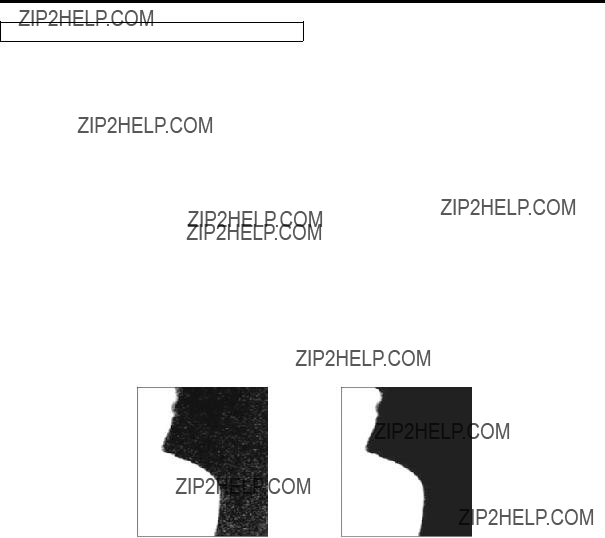
3. Basic operations
Step 2
The objective of this step is to remove the noise in the background image.
The noise is removed by carrying out this step several times.
??????On the CHR KEY menu, turn [F1] to display the Sample1 sub menu.
<Menu display>
??????Turn [F2] to select ???Matte??? using the View item.
??????Turn [F3] to select ???Cln.BG??? using the Mode item.
??????Using the positioner, move the position of the sample marker to the position of the noise (white dots) in the background image.
To change the size of the sample marker, turn the rotary encoder [Z].
??????If the sample area that has been set is acceptable, press the rotary encoder [Z]. The noise in the area that has been set is now removed.
??????To return to the
54

3. Basic operations
Step 3
The objective of this step is to remove the noise in the foreground image.
The noise is removed by carrying out this step several times.
??????Turn [F2] to select ???Matte??? using the View item.
<Menu display>
??????Turn [F3] to select ???Cln.FG??? using the Mode item.
??????Using the positioner, move the position of the sample marker to the position of the noise (white dots) in the foreground image.
To change the size of the sample marker, turn the rotary encoder [Z].
??????If the sample area that has been set is acceptable, press the rotary encoder [Z]. The noise in the area that has been set is now removed.
??????To return to the
55

3. Basic operations
Step 4
After steps 1 to 3 have been carried out, noise will still remain in the detail areas such as the subject's hair as shown in the image on the right.
If there are many areas with noise, the noise is removed by carrying out this step several times.
If there are few areas with noise, adjust the noise using the Spill(+) item and
??????Using the positioner, move the position of the sample marker to the position of the remaining noise. To change the size of the sample marker, turn the rotary encoder [Z].
??????If the sample area that has been set is acceptable, press the rotary encoder [Z].
The noise in the area that has been set is now removed, and the colors become more natural.
??????To return to the
???Execute sampling in both the light and dark areas as the sample area.
???If the noise in the foreground image is not completely removed by carrying out the steps above, proceed with the FineTun sub menu operation.
56

3. Basic operations
Step 5
The objective of this step is to finely adjust the image by adjusting the noise and transparency, for example.
??????On the CHR KEY menu, turn [F1] to display the Sample2 sub menu.
<Menu display>
??????Turn [F2] to select the image to be adjusted using the View item.
Cmpsit: Composite image that combines the background image and key
Matte: Matte image
Proc.FG: Process foreground image
FG: Foreground image
??????Turn [F3] to select the adjustment function using the Mode item. For details on the items, refer to the following pages.
??????Using the positioner, move the position of the sample marker to the position to be sampled. To change the size of the sample marker, turn the rotary encoder [Z].
??????If the sample area that has been set is acceptable, press the rotary encoder [Z]. The area that has been set is now sampled.
??????To return to the
57

3. Basic operations
In these modes, the noise in the foreground image can be removed or restored step by step through repeated sampling.
In these modes, the matte information is adjusted.
If, for instance, the area of shadow in the foreground image is to be made lighter, use
Transparent images such as images of smoke or water can be made to stand out more.
58

3. Basic operations
In these modes, the noise in the background image can be removed step by step.
This is a useful way of adjusting images lost by other sampling operations to adjust the texture or transparency of images.
[MatSpng]
In this mode, the
With [Cln.FG], the colors of the selected parts are restored to their original colors but, with [MatSpng], only the
[MkFGTrn]
In this mode, the transparency of areas with a low transparency in the foreground image is increased. This is useful when, for instance, areas covered with dark smoke or clouds in a foreground image are to be made
[RstrDtl]
In this mode, the transparency of areas with a high transparency in the background image is reduced.
This is useful when, for instance, restoring the details of an image (such as an image with a subject who has loose hair or an image with smoke), which have been lost as a result of a [ClnBG] or other such operation on the Sample1 sub menu, to what they were in the original image.
59

3. Basic operations
[FineTun]
In this mode, detailed images can be adjusted.
??????On the CHR KEY menu, turn [F1] to display the FineTun sub menu.
<Menu display>
??????Turn [F2] to select [Cmpsit] using the View item.
??????Turn [F3] to remove or restore the noise using the Spill item.
When it is turned clockwise, a large amount of noise is removed from the foreground image, and the image colors increasingly approach the complementary color (opposite color) of the blue screen.
When it is turned counterclockwise, the image colors approach the colors of the original foreground image.
??????By turning [F4] clockwise, the matte of the colors closely resembling the colors of the foreground image can be adjusted using the Trans item.
This is useful when, for instance, making the parts covered by dark smoke, clouds or other such objects in the foreground image
??????By turning [F5] clockwise, the matte information for the colors closely resembling the colors of the background image can be adjusted using the Detail item.
This is useful when, for instance, restoring the details of an image (such as an image with a subject who has loose hair or an image with smoke), which have been lost in the foreground image as a result of sampling, to what they were in the original image.
60
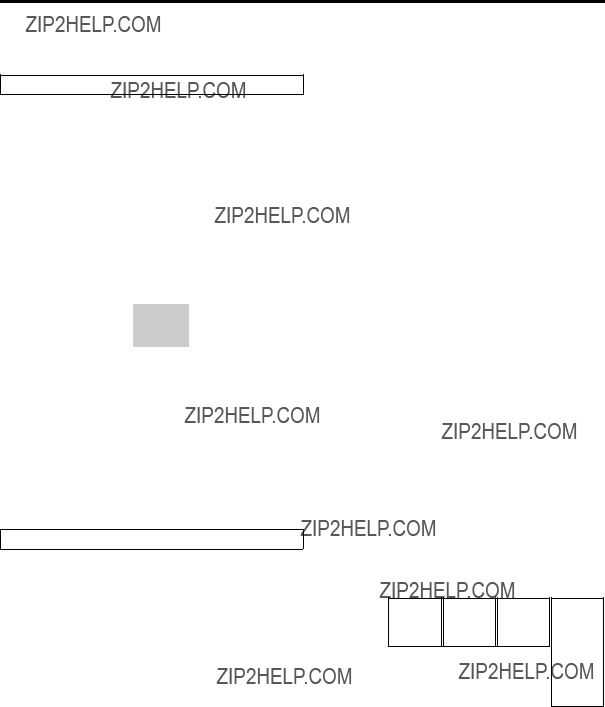
3. Basic operations
A border, shadow or other edge can be added to the key.
Setting the key edge
??????Press the [KEY] button to light its indicator and display the KEY menu.
??? Refer to
<Menu display>
??????Turn [F1] to display the Edge sub menu.
??????Turn [F2] to select the edge type.
Off: An edge is not added.
Border: A border is added around the entire edge.
Drop: A diagonal border is added.
Shadow: A shadow is added.
Outline: An outline (only a border with no fill) is added.
??????Turn [F3] to set the edge width.
??????Turn [F4] to set the direction (in
(Top)
180 225 270
90 45 0
(Bottom)
Setting the edge color
??????On the KEY menu, turn [F1] to display the EdgeCol sub menu.
<Menu display>
??????Turn [F2] ,[F3] and [F4] to adjust the Hue, Sat and Lum of the edge color.
??? To call the preset color
Turn [F5] to select the preset color using the Load item, and press the [F5] switch.
The Hue, Sat and Lum values are changed to the preset color values.
???To save the values that were set before calling the preset color, refer to
0.0 0.0 0.0 White
|| | Yellow
359.9100.0 108.0 Cyan
Green
Magenta
Red
Blue
61

3. Basic operations
These steps are taken to mask the key signals using the mask signal of the box pattern.
??????Press the [KEY] button to light its indicator and display the KEY menu. ??? Refer to
??????Turn [F1] to display the Mask sub menu.
<Menu display>
??????Turn [F2], and select the masking method using the Mask item.
Off: The key signals are not masked.
Manual: The area that is set using the MaskAdj sub menu is masked.
4:3: The signals are masked to the 4:3 aspect ratio.
??????Turn [F3] to set whether to invert the mask signal using the Invert item.
On: The mask signal is inverted.
Off: The mask signal is not inverted.
??????Turn [F1] to display the MaskAdj sub menu.
<Menu display>
KEY 11|Left |Top |Bottom |Right
MaskAdj | ???25.00| 25.00| ???25.00| 25.00
??????Turn [F2] to [F5] to set the area to be masked.
The Left setting cannot exceed the Right setting (and vice versa) and, similarly, the Top setting cannot exceed the Bottom setting (and vice versa).
<Key mask setting> (figure shows the default values)
Area masked
Area where the key signal is effective
Video signal range
62
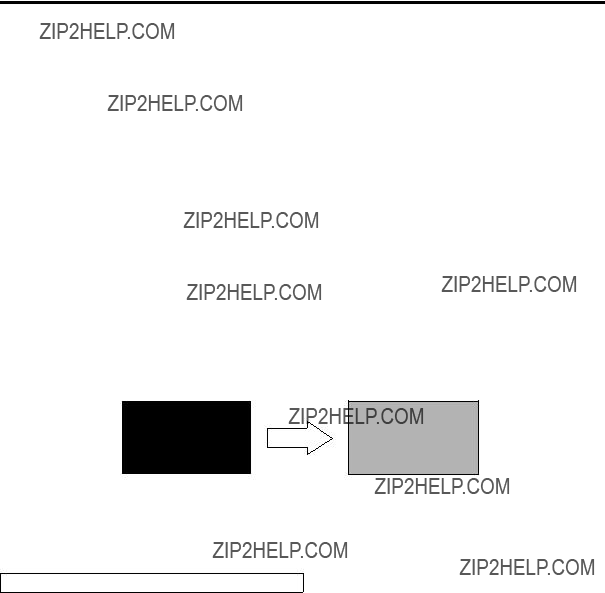
3. Basic operations
Using DVE effects, this key enables the key signals that have been input to be moved, expanded or contracted. In order for the flying key to take effect, select SL #5 as the key transition.
When the key transition is executed, the keys are combined by the key signals set using the flying key menu. (The transition effect is fixed at MIX.)
Since the flying key uses DVE effects, the image is delayed by one frame.
??????Press the [KEY] button to light its indicator and display the KEY menu. ??? Refer to
??????Turn [F1] to display the FlyKEY sub menu.
(It is also possible to display the FlyKEY sub menu directly without displaying the KEY menu in step ??? by
<Menu display>
??????Turn [F2] to set the X coordinate of the key signal using the
??????Turn [F3] to set the Y coordinate of the key signal using the
??????Turn [F4] to set the key signal change size (max. 400: 400 %) using the Size item.
ABC
ABC
In order to add the edge of the key before the DVE effect, the thickness of the edge is also changed when the size is changed.
PinP combinations using the flying key
When ???Full??? is selected using the Type item in
(At this point in time, the Clip item and Gain item cannot be set on the Adjust sub menu.)
With the full key, the image on the full screen serves as the key source signal so an edge will not be added unless a further step is taken.
To add an edge, mask the key signals so that the key source signals are made smaller than the entire screen. For details on masking, refer to
63

3. Basic operations
Another image can be combined with the background image.
This unit supports two PinP channels.
Press the [PinP 1/2] button among the AUX bus selector buttons.
When the button is lighted in amber, the PinP1 sub menu is displayed on the LCD, and the state in which the PinP1 materials are selected is now established for the AUX bus crosspoint buttons.
When the button is lighted in green, the PinP2 sub menu is displayed on the LCD, and the state in which the PinP2 materials are selected is now established for the AUX bus crosspoint buttons.
The selected AUX bus crosspoint button lights in amber. (It will light in red if the selected signal is a PGM output signal.)
<Menu display>
100.0100.0
AUX
SHIFT
64

3. Basic operations
Square or Circle can be selected as the shape used for combining PinP1 images.
PinP2 images are fixed as Square.
??????Press the [PinP1/PinP2] button to light its indicator and display the PinP1 menu. ??? Refer to
100.0100.0
0 % 
 100 %
100 %
??????Turn [F2] and, using the Shape item, select the shape used for combining images.
When Circle has been selected using the Shape item, turn [F3] to change the aspect ratio of the circle using the CrclAsp item.
When Square has been selected using the Shape item,
??????Turn [F4] to adjust the transmissivity (darkness) applying when the images are combined using the Density item.
Select whether to output the PinP1 and PinP2 preview images to the preview output.
On the PinP1 menu (or PinP2 menu), turn [F5] to set the PVW item.
Settings for the PVW item are the same for both PinP1 and PinP2.
<Menu display>
100.0100.0
On: An image with the PinP1 and PinP2 effect added is output to the preview output.
Off: An image without the PinP1 and PinP2 effect added is output to the preview output.
The PVW On and Off settings can be allocated to the user buttons. ??? Refer to
65
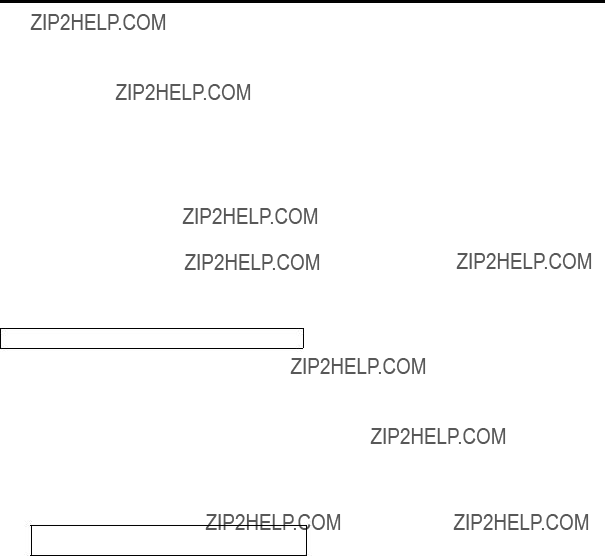
3. Basic operations
??????Set the transition time.
On the TIME menu, turn [F1] to display the PinP1 sub menu (or PinP2 sub menu). As with background transitions, set the transition time.
??? Refer to
??????When the [PinP1 ON] button (or [PinP2 ON] button) in the transition area is pressed, the PinP1 image (or PinP2 image) transitions (fades in) for the length of the transition time that has been set.
During
When the [PinP1 ON] button (or [PinP2 ON] button) is pressed after
During
If the [PinP1 ON] button (or [PinP2 ON] button) is pressed at any point during a transition, the direction of the transition is reversed.
Adjusting the PinP position and size
While the PinP menu is selected, adjust the X and Y coordinates using the positioner in the positioner area, and adjust the size using the rotary encoder [Z]. Alternatively, the settings can be performed on the menus.
??????Press the [PinP1] button (or [PinP2] button) to light its indicator and display the PinP1 menu (or PinP2 menu).
??? Refer to
??????Turn [F1] to display the Position sub menu.
??????Either operate the positioner and the rotary encoder [Z] or turn [F2], [F3] and [F4] to set the X and Y coordinates and the size using the
<Menu display>
PinP1
Position| 0.00| 0.00| 25.00|
66
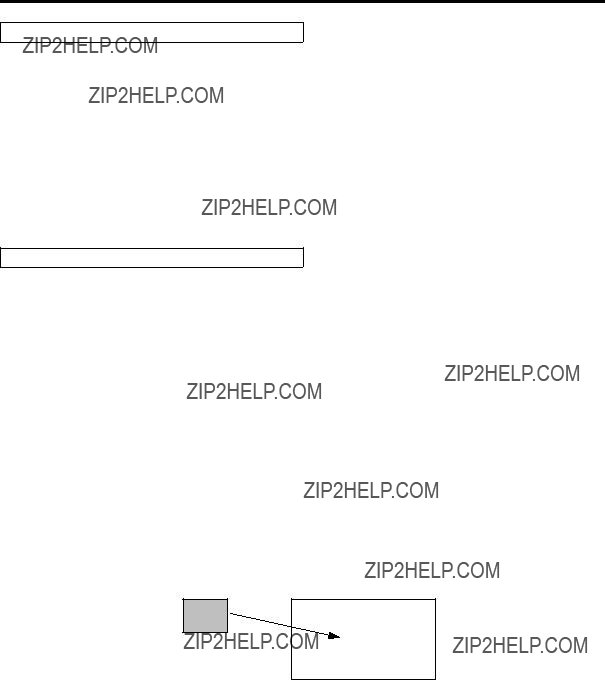
3. Basic operations
Adjusting the rotation angle
??????On the PinP1 menu (or PinP2 menu), turn [F1] to display the Rotation sub menu.
??????Either operate the positioner and rotary encoder [Z] or turn [F2], [F3] and [F4] to set the X rotation, Y rotation and Z rotation.
<Menu display>
Select the dot by dot mode
When the system is set to the HD mode and an SD format image is to be used for the PinP material, the images can be combined in the dot by dot mode
In this mode, the SD format image will not be
??????Press the [INPUT] button to light its indicator and display the INPUT menu. ??? Refer to
??????Turn [F1] to display the INPUT XX sub menu. (X: IN1 to IN16, A1, A2, B1, B2)
Select the PinP material input for X.
??????Turn [F2] to display the third menu of FS.
<Menu display>
??????Turn [F4] to select DbyD using the Mode item, and press the [F4] switch to enter the selection.
SDHD
PinP combined image
67
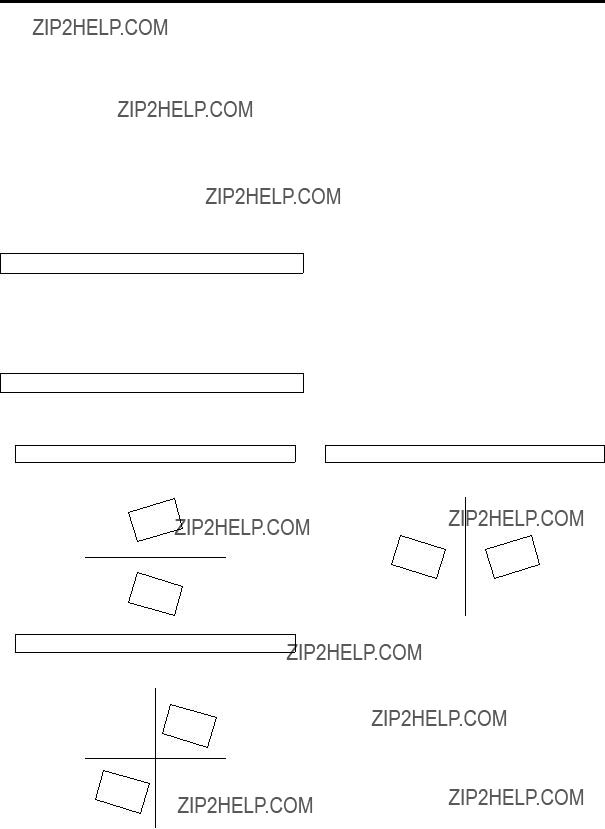
3. Basic operations
The PinP1 and PinP2 images perform a symmetrical operation for the axis whose coordinates and rotation angle have been set.
The image serving as the reference is the PinP image of the menu being operated.
??????On the PinP1 menu (or PinP2 menu), turn [F1] to display the Sync sub menu.
<Menu display>
Setting the priority
??????Turn [F2] to select, using the Prior item, to set the positional relationship when the PinP1 and PinP2 images overlap.
1over2: The PinP1 image is placed over the PinP2 image
2over1: The PinP2 image is placed over the PinP1 image
Linking PinP1 and PinP2
??????Turn [F3] to set the position that will serve as the reference.
The image serving as the reference is the PinP image of the menu being operated.
When ???X??? has been selected as the Synm setting
The coordinates and rotation angle are made symmetrical to the X axis.
When ???Y??? has been selected as the Synm setting
The coordinates and rotation angle are made symmetrical to the Y axis.
When ???Center??? has been selected as the Synm setting
The coordinates and rotation angle are made symmetrical to the center.
68

3. Basic operations
A border or soft effect can be added to PinP.
??????Press the [PinP1] button (or [PinP2] button) to light its indicator and display the PinP1 menu (or PinP2 menu).
??? Refer to
??????Turn [F1] to display the Border sub menu.
<Menu display>
100.0100.0
??????Turn [F2] to set On (or Off) for the border using the Border item.
??????Turn [F3] to set the width of the border using the Width item.
??????Turn [F4] to set the amount of soft effect using the Soft item. The soft effect is OFF if 0.0 is set.
When ???On??? has been selected as the Border item setting, the ratio of the soft effect to the border width is indicated as the amount of soft effect.
When only the soft effect is to be added to PinP, select ???Off??? as the Border item setting.
??????Turn [F5] to set the change in the border width using the Mode Item.
Fix:The border width is kept constant.
Var (Variable): The border width changes to suit the PinP size.
Setting the border color
??????On the PinP1 menu (or PinP2 menu), turn [F1] to display the BodrCol sub menu.
<Menu display>
0.00.0 0.0 Yellow
359.9100.0 108.0 Green
Magenta
Red
Blue
Black
??????Turn [F2], [F3] and [F4] to adjust the Hue, Sat and Lum of the border color.
??? To call the preset color
Turn [F5] to select the preset color using the Load item, and press the [F5] switch.
The Hue, Sat and Lum values are changed to the preset color values.
??? To save the values that were set before calling the preset color, refer to
69
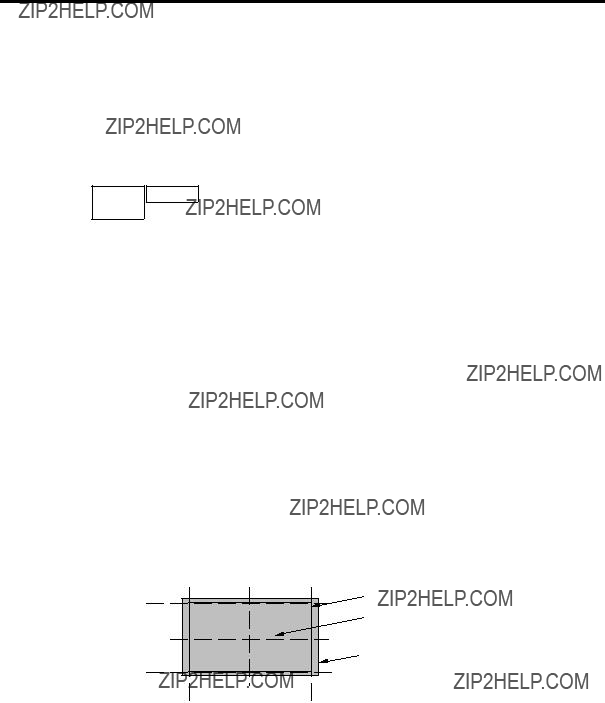
3. Basic operations
??????Press the [PinP1] button (or [PinP2] button) to light its indicator and display the PinP1 menu (or PinP2 menu).
??? Refer to
??????Turn [F1] to display the Trim sub menu.
<Menu display>
Manual Pair
4:3
??????Turn [F2] to select the trimming type using the Trim item.
Off: No trimming
4:3: Automatic trimming so that the aspect ratio is 4:3
Manual: Trimming using the value set on the TrimAdj sub menu
??????Turn [F3] to select the operation to be performed during the manual setting using the Manual item.
Free: The Left, Right, Top and Bottom parameters change independently.
However, the Left setting cannot exceed the Right setting (and vice versa) and, similarly, the Top setting cannot exceed the Bottom setting (and vice versa).
Pair: The settings are changed in such a way that the Left and Right trimming amounts and the Top and Bottom trimming amount are the same. (This makes for a
??????Turn [F1] to display the TrimAdj sub menu, and turn [F2], [F3], [F4] and [F5] to set the trimming values.
<Trimming settings> (figure shows the default values)
70

3. Basic operations
Characters or other images can be combined with the background image.
This unit supports two DSK channels.
??????Press the [DSK1] button (or [DSK2] button) to light its indicator and display the DSK1 menu (or DSK2 menu).
??? Refer to
??????Turn [F1] to display the DSK1 sub menu (or DSK2 sub menu).
<Menu display>
??????Turn [F2] to select the Type item.
Lum (luminance key/self key):
This is for creating the key signals from the luminance component of the key fill signal.
Linear (linear key/EXT key):
This is for creating the key signals from the luminance component of the key source signal. It is used when the key source signal and key fill signal are different.
Since the luminance key is operated as a self key, the key fill signals are used as the key source signals. When the luminance key has been selected as the downstream key type, the key signals will remain unchanged even when the key source signals are switched.
When using the linear key, use material with a black background and white characters or shape to be combined by the key as the key source signal.
Material which is not black and white may not be combined clearly.
Material with a white background and black characters, etc. can be reversed using the key invert function for use.
??????When the luminance key has been selected, the chroma components can be contained in the key signals generated in view of the fact that it is used as a self key. (This is not applied to the linear key.)Turn [F3] to select the setting using the LumKey item.
ChrmOn: In addition to the luminance components, the chroma components are also factored in when generating the key signals.
Use this setting if colors with low luminance components are used for the key signals (when, for instance, blue characters are to be removed).
ChrmOff: The key signals are generated only from the luminance components.
??????Turn [F4] to select the fill type using the Fill item.
Bus: The bus signal is used for the key fill signal.
Matte: The internal fill matte is used for the key fill signal.
71

3. Basic operations
Setting the fill matte color
??????On the DSK1 menu (or DSK2 menu), turn [F1] to display the FillMatt sub menu.
<Menu display>
0.00.0 0.0 Yellow
359.9100.0 108.0 Green
Magenta
Red
Blue
Black
??????Turn [F2], [F3] and [F4] to adjust the Hue, Sat and Lum of the fill matte.
??? To call the preset color
Turn [F5] to select the preset color using the Load item, and press the [F5] switch. The Hue, Sat and Lum values are changed to the preset color values.
??? To save the values that were set before calling the preset color, refer to
72

3. Basic operations
When the [DSK 1/2] button among the AUX bus selector buttons is pressed and it has lighted in amber, DSK1 is displayed as the menu.
The state in which the DSK1 fill material is selected is now established for the AUX bus crosspoint buttons.
If the button has lighted in green, DSK2 is displayed as the menu, and the state in which the DSK2 fill material is selected is now established for the AUX bus crosspoint buttons.
The selected AUX bus crosspoint button lights in amber. (It will light in red if the selected signal is a PGM output signal.)
AUX
SHIFT
Selecting the DSK source signal
As with the selection of the KEY source signal, set the DSK source for the DSK fill.
This setting is the same for KEY and DSK.
???Setting with AUX bus crosspoint buttons
??????Press the [DSK 1/2] button (or [KEY] buttons) of the AUX bus selector buttons to light its indicator, and hold down the AUX bus crosspoint button for the selected key fill signal.
<Menu display>
??????Turn the [F5] and select a DSK source signal (SRC) for the DSK fill signal (FILL), and press the [F5] switch.
???Setting in the CONFIG menu
??????Press the [CONFIG] button to light its indicator, and display the CONFIG menu.
??? Refer to
??????Turn [F1] to display the KSAsign sub menu.
??????Turn [F2] to select the DSK fill material using the Fill item.
??????Turn [F3] to select the DSK source material using the Source item, and press the [F3] switch.
The luminance and chroma keys are used as self keys so the DSK fill signal can be used as the DSK source signal regardless of the menu setting.
<Menu display>
IN1~16 IN1~16
CBGD CBGD
CBAR CBAR
FMEM1~4 FMEM1~4
NoAsign
73

3. Basic operations
??????Set the transition time.
On the TIME menu, turn [F1] to display the DSK1 sub menu (or DSK2 sub menu). As with background transitions, set the transition time.
??? Refer to
??????When the [DSK1 ON] button (or [DSK2 ON] button) in the transition area is pressed, the DSK1 image (or DSK2 image) is combined (fades in) for the length of the transition time that has been set.
During
When the [DSK1 ON] button (or [DSK2 ON] button) is pressed after
During
If the [DSK1 ON] button (or [DSK2 ON] button) is pressed at any point during a transition, the direction of the transition is reversed.
Select whether to output the DSK1 (or DSK2) preview image to the preview output.
??????Press the [DSK1] button (or [DSK2] button) to light its indicator and display the DSK1 menu (or DSK2 menu).
??? Refer to
<Menu display>
??????Turn [F5] to set the PVW item.
On: An image with the DSK1 (or DSK2) effect added is output to the preview output.
Off: An image without the DSK1 (or DSK2) effect added is output to the preview output.
PVW On and Off can be allocated to the user buttons. ??? See
74

3. Basic operations
The DSK definition can be adjusted.
??????Press the [DSK1] button (or [DSK2] button) to light its indicator and display the DSK1 menu (or DSK2 menu).
??? Refer to
??????Turn [F1] to display the Adjust sub menu.
<Menu display>
??????Turn [F2], [F3] and [F4] to adjust the DSK (downstream key) definition.
??????Turn [F5] to set key invert.
If On is set, the key signals generated internally are inverted.
75

3. Basic operations
A border, shadow or other type of edge can be added to DSK.
Setting the edge
??????Turn [F3] to set the edge width.
??????Turn [F4] to set the direction (in
(Top)
180 225 270
76
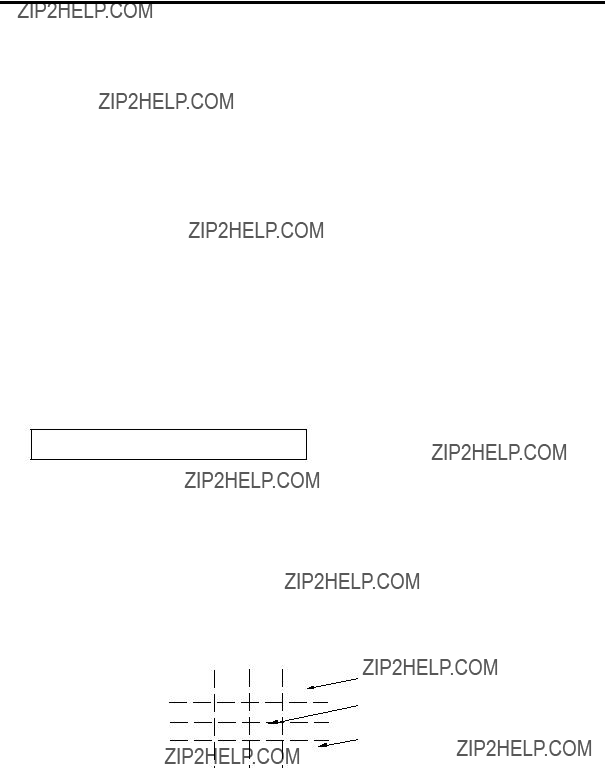
3. Basic operations
These steps are taken to mask the DSK signals using the mask signal of the box pattern.
??????Press the [DSK1] button (or [DSK2] button) to light its indicator and display the DSK1 menu (or DSK2 menu).
??? Refer to
??????Turn [F1] to display the Mask sub menu.
<Menu display>
??????Turn [F2], and select the masking method using the Mask item.
Off: The DSK signals are not masked.
Manual: The area that is set using the MaskAdj sub menu is masked.
4:3: The signals are masked to the 4:3 aspect ratio.
??????Turn [F3] to set whether to invert the mask signal using the Invert item.
On: The mask signal is inverted.
Off: The mask signal is not inverted.
??????Turn [F1] to display the MaskAdj sub menu.
<Menu display>
DSK1 7|Left |Top |Bottom |Right
MaskAdj | ???25.00| 25.00| ???25.00| 25.00
??????Turn [F2] to [F5] to set the area to be masked.
The Left setting cannot exceed the Right setting (and vice versa) and, similarly, the Top setting cannot exceed the Bottom setting (and vice versa).
<DSK mask setting> (figure shows the default values)
Area masked
Area where the DSK signal is effective
Video signal range
77

3. Basic operations
The user can fade out from a program image to the black screen or fade in to a program image from a black screen.
??????Set the duration of the transition.
On the TIME menu, turn [F1] to display the FTB sub menu. As with a background transition, set the transition time.
??? See
??????When the [FTB ON] button in the transition area is pressed,
During
During
If the [FTB ON] button is pressed during the transition, the transition direction is reversed.
???1: In the FTB status, the crosspoint button which is normally lighted in red lights in amber.
FTB
ON
78

3. Basic operations
The color background to be used by the bus can be set.
Two methods are available: under one method the Hue (hue), Sat (color saturation) and Lum (luminance) are set, and under the other the 8 preset colors (white, yellow, cyan, green, magenta, red, blue and black) are called. The Hue, Sat and Lum of the called colors can also be adjusted.
Adjusting the colors
??????Press the [CBGD] button and display the CBGD menu. ??? Refer to
<Menu display>
0.00.0 0.0 Yellow
359.9100.0 108.0 Green
Magenta
Red
Blue
Black
??????Turn [F2], [F3] and [F4] to perform the color adjustments (Hue, Sat and Lum).
Calling the preset colors
Turn [F5] to select the preset color using the Load item, and press the [F5] switch.
The Hue, Sat and Lum values are changed to the preset color values.
??? To save the values that were set before calling the preset color, refer to
79

3. Basic operations
The AUX1 to AUX4 output signals can be selected.
??????Press one of the [AUX1] to [AUX4] buttons among the AUX bus selector buttons. The selected button lights in amber.
??????Press one of the AUX bus crosspoint buttons.
The selected signal is output to the pressed [AUX1] to [AUX4] button.
AUX
CAM
MEM
SHIFT
The button with the signals selected by AUX1 lights in amber.
<Signals that can be selected by the AUX bus>
???When the AUX bus is selected on the sub screen of the multi view display, the image is looped as if two mirrors have been placed opposite each other.
80

3. Basic operations
The MIX transition is executed when the output signal set for AUX1 is switched.
??????Press the [AUX1] button of the AUX bus selector buttons.
The selected button and its corresponding AUX bus crosspoint button light in amber.
??????Press the AUX bus crosspoint button for the output signal to be switched to.
The MIX transition is now initiated for the length of the transition time that was set using the TIME menu. While the transition is underway, the transition source AUX button lights in green, and the transition destination AUX button blinks in amber.
As soon as the transition is completed, the transition source AUX button goes off, and the transition destination AUX button lights in amber.
Furthermore, when another signal is selected at a midway point through a transition, the transition processing continues from that midway point.
AUX
SHIFT
Blinks in amber (while the transition is underway).
Lights in green.
81

3. Basic operations
The AUX1 transition time and transition enable/disable can be set.
??????Press the [TIME] button to light its indicator and display the TIME menu. ??? Refer to
??????Turn [F1] to display the AUX1 sub menu.
??????Turn [F4] to select the display unit using the Unit item.
??????If frame has been selected as the unit, turn [F2] or [F3] to set the length of the transition time.
??????If second (sec) has been selected as the unit, turn [F2] to set the second unit or turn [F3] to set the frame unit.
<Menu display>
Disable
Any time in the range from 0 to 999f can be set. Depending on the video format, the time that can be set with a display in seconds will differ.
59.94i: max. 33s09f, 59.94p: max. 16s39f, 50i: max. 39s24f, 50p: max. 19s49f,
24psf: max 41s15f, 23.98psf: max 41s15f
??????Turn [F5] to set enable or disable for the transition using the ENBL item.
Enable: Enable
Disable: Disable
When disable has been set for the transition, the output signals are switched with no transition when the output signals set in AUX1 is switched.
82

3. Basic operations
Background transition patterns, PinP sizes, border widths and other video statuses can be stored in and recalled from the memory.
Depending on what statuses are to be stored in the memory, the SHOT memory, BKGD/WIPE memory, PinP memory and CAM memory are available. Furthermore, by setting effect dissolve, the switching from the current image to an image or operation stored in the SHOT memory can be changed smoothly.
MEMORY / PATTERN
It is also possible to select the switcher (AV) system or camera (AW) system for the colors in which the function buttons are to light when memory operations (store, recall, delete) have been performed.
??????Press the [CONFIG] button to light its indicator and display the CONFIG menu. ??? Refer to
??????Turn [F1] to display the SHOT MEM sub menu.
<Menu display>
AW
??????Turn [F2] to select the lighting method for the function buttons using the LEDMode item.
AV: Switcher system (the buttons light in green).
AW: Camera system (the buttons light in amber).
83

3. Basic operations
84

3. Basic operations
The settings for the images and operations to be kept in the memory can be stored in the number keys (1 to 10).
MEMORY / PATTERN
??????Using the unit, set the images or operations to be kept in the memory.
??????Press one of the buttons ??? [SHOT MEM], [BKGD WIPE MEM], [PinP MEM] or [CAM MEM] ??? to select the corresponding memory whose settings are to be stored.
The selected button lights in amber.
Depending on the operation that was performed last, the [STOR] button, [RECALL] button or [DEL] button lights.
??????Press the [STOR] button.
The [STOR] button lights in red.
??????Hold down (for about 2 seconds) the number key (1 to 10) in which the settings are to be stored. When the storing on the settings in the
??????Repeat the above steps to register other types of settings in other number keys.
???All the items of the selected type of the memory unit (SHOT memory, BKGD WIPE memory, PinP memory and CAM memory) are stored in one number key.
??? Refer to
???The preset numbers stored in the
???No settings can be stored in the number key that is lighted in green (or in amber with the AW system) when the [STOR] button is pressed. First delete the memory settings in the number key, and then repeat the storage procedure.
???Be careful when registering settings using the [CAM MEM] button, as preset numbers stored in the
85
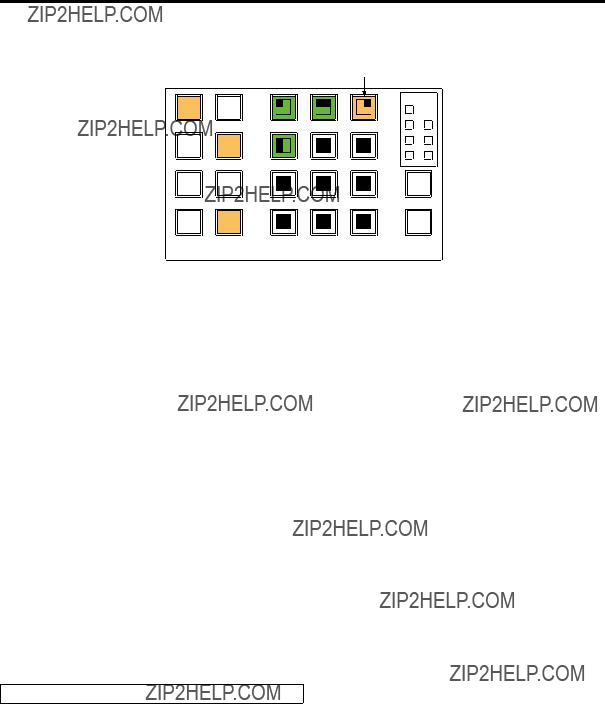
3. Basic operations
MEMORY / PATTERN
??????Press one of the buttons ??? [SHOT MEM], [BKGD WIPE MEM], [PinP MEM] or [CAM MEM] ??? to select the corresponding memory whose operations are to be recalled.
The selected button lights in amber.
Depending on the operation that was performed last, the [STOR] button, [RECALL] button or [DEL] button lights.
??????Press the [RECALL] button. The [RECALL] button lights in amber.
The button of the number key containing the stored operations lights in green (or in amber with the AW system).
??? However, it will not light if [CAM MEM] has been selected.
??????Press the number key (1 to 10) whose stored operations are to be recalled.
???The items of the selected memory unit are targeted as the stored operations that will be recalled. ??? Refer to
When another number button is pressed, the memory items stored in the pressed button will be recalled.
??????As soon as the stored operation that has been recalled is played, the [UNDO] button becomes operable, and it lights in amber.
If the [UNDO] button is pressed while it is lighted, the status before the stored operation is played will be restored.
???When the [CAM MEM] button is selected, the [UNDO] button will have no effect so it will not light.
???The [CAM MEM] button uses the preset numbers stored in the
Bear in mind that if the preset details have been changed at the
??????To exit memory recall, press the [STOR] button or [SHOT MEM] button.
XPT DSBL
When number key No.11 [XPR DSBL] is pressed while a stored operation is playing, it will light in amber. When the [RECALL] button is now pressed, the selected materials of the PGM/A bus, PST/B bus, KEY bus, PinP1/2 bus and DSK1/2 bus will be excluded from the target for stored operations.
???The number key No. 11 [XPT DSBL] will not light when the [CAM MEM] button is selected, as the operations of the key are disabled.
86

3. Basic operations
MEMORY / PATTERN
??????Press one of the buttons ??? [SHOT MEM], [BKGD WIPE MEM], [PinP MEM] or [CAM MEM] ??? to select the corresponding memory whose operations are to be deleted.
The selected button lights in amber.
Depending on the operation that was performed last, the [STOR] button, [RECALL] button or [DEL] button lights.
??????Press the [DEL] button.
The [DEL] button lights in red.
The button of the number key containing the stored operations lights in green (or in amber with the AW system).
??? However, it will not light when [CAM MEM] is selected.
??????Hold down (for about 2 seconds) the number key (1 to 10) used to delete the stored operations. The button of the pressed number key goes off.
??????As soon as the stored operations are deleted, the [UNDO] button becomes operable and lights in amber. If the [UNDO] button is pressed while it is lighted, the status before the stored operation was deleted will be restored.
The [CAM MEM] button deletes specified preset numbers registered in the
??? When the [CAM MEM] button is selected, the [UNDO] button will have no effect so it will not light.
??????To exit memory delete, press the [DEL] button or [SHOT MEM] button.
87

3. Basic operations
Switching from the current image to the image or operation stored in the SHOT memory can be performed smoothly.
For the items targeted by effect dissolve, refer to the SHOT memory items in
??????Press the [SHOT MEM] button, and then press the [RECALL] button.
??????Press number key No.12 [EFF DSLV] to enable effect dissolve.
When the function is enabled, the number key No.12 [EFF DSLV] lights in amber.
??????Press the number key (1 to 10) containing the stored operation.
The switching from the current image to the stored operation recalled by pressing the number key is performed smoothly. The time taken for the change is set on the EFF DSLV sub menu of the TIME menu. ??? Refer to
<Menu display>
Pressed number keys blink in green (or in amber with the AW system) while the operation switching is under way.
When the operation switching has been completed, the pressed number key lights in amber (or in green with the AW system).
???When number key No.12 [EFF DSLV] is pressed at any point during the operation switching, the switching is canceled, and switching is initiated to the operation of the number key that was selected at that instant.
???During the operation switching, the operation of the fader lever is canceled.
???During the operation switching, other stored operations cannot be recalled.
???When initiating PinP1/2 and DSK1/2 transitions, the switching process is not stored in the memory.
???The number key No.12 [EFF DSLV] will not light when the [CAM MEM] button is selected, as the operations of the key are disabled.
88

3. Basic operations
Still images can be stored in the unit???s four internal frame memories for use.
The still images are transferred to the frame memories through the AUX bus and an SD memory card. Conversely, the images in the frame memories can be transferred to an SD memory card.
Images in the frame memories can be used as bus images by assigning FMEM1 to FMEM4 using the crosspoint assignment function.
Data for images stored in the frame memory can be retained even when the power is turned off, by saving them in the flash memory area built into the mainframe.
??????Press the [FMEM] button to light its indicator and display the FMEM menu. ??? Refer to
??????Turn [F1] to display the AUX sub menu.
<Menu display>
??????Turn [F2] to select the frame memory in which to store the image using the FMEM item.
??????Turn [F3] to select the AUX bus from which to transfer the images using the Select item.
??????Turn [F4] to select on or off for the review display setting using the Review item.
On: After the image has been imported, the images in the frame memory (FMEM1 to FMEM4) selected for the AUX bus are displayed (for 2 seconds).
Even during review display, the next image can be imported.
Off: No review display.
??????Press the [F5] switch (Exec) to import the still images to the frame memory. The still images can also be imported using the user buttons.
???StrFM1??? to ???StrFM4??? have been allocated to the user buttons (??? See
Imported still image
89

3. Basic operations
Data for images stored in the frame memory can be retained even when the power is turned off, by saving them in the flash memory area built into the mainframe.
Whether to automatically save the image data stored in the frame memory when the data is transferred from the AUX bus or to manually save them must be set.
Care must be taken when selecting manual saving, as image data stored in the frame memory will be lost if the power to the mainframe is turned off before the saving operation is completed.
??????Light the [FMEM] button by pressing it, and display the FMEM menu. ??? Refer to
??????Turn [F1] to display the Memory sub menu.
<Menu display>
Manual 
 FMEM1~4
FMEM1~4
??????Turn [F2] to select the saving method in the Mode item.
AUTO: Automatic saving
Manual: Manual saving
??????Turn [F3] to select the frame memory for saving data in the flash memory area in the Select item. Selecting [ALL] will save data in all frame memory areas, from FMEM1 to FMEM4.
??????Press the [F5] switch (Exec) to save data in the flash memory area.
??? The [F5] switch becomes enabled when ???Manual??? is selected in the Mode item.
90
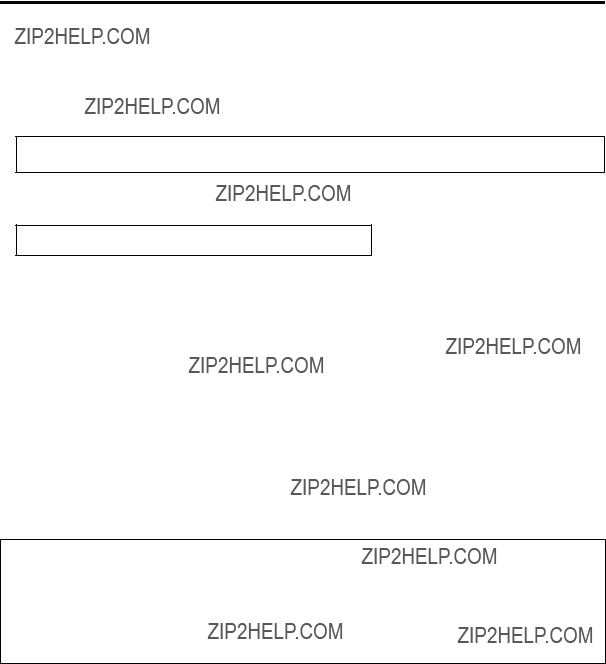
3. Basic operations
The unit???s frame memory data and system data can be stored on SD memory cards.
Conversely, this data can be loaded from the SD memory cards to the unit.
Frame memory data (still image data):
The unit supports
JPEG format files can be loaded, but they become BMP format files when they are stored from the unit to the SD memory card.
This unit cannot resize the images so resize them appropriately using another device such as a personal computer before saving them on the SD memory card.
<Applicable sizes>
HD/1080i: 1920???1080, HD/1080psf: 1920???1080, HD/720p: 1280???720,
SD/NTSC: 720???487, SD/PAL: 720???576
BMP files:
If the sizes are different, the center of the images will be lined up.
If the image is large, it will be cropped.
If the image is small, the area around it will be filled in with a black border.
JPEG files:
Images in the sizes listed in ???Applicable sizes??? above can be loaded.
The pixels of images in SD format are not square, so the aspect ratio will be different when the images are displayed on the computer and when they are imported into frame memory (with NTSC format, they will be vertically long).
To keep the images true to their actual proportions, make sure the original size is 720???540 pixels. If the images are in NTSC format, use images shrunk to 720???487 pixels. If the images are in PAL format, use images enlarged to 720???576 pixels.
System data:
The ???system data??? refers to all the data stored in the unit with the exception of the date, time and network settings and of the still image data. The extension used for the system data files is ???h45???.
SD memory card handling precautions
???Do NOT eject the SD memory card while the SD memory card access LED is lighted.
When an SD memory card is ejected while the SD memory card access LED is lighted, the transition of the operation from data access to card ejection may be temporarily suspended.
In addition, the data stored on the SD memory card may be lost.
???The data stored on SD memory cards may be lost as a result of misplacing the cards or performing erroneous operations, for instance. It is recommended that valuable data be stored on a personal computer or other device.
91

3. Basic operations
In order for an SD memory card to be used in the unit, it must first be initialized by the unit. Initializing the SD memory card formats it (in compliance with the SD standard) and creates the dedicated directory.
(All files saved on the SD memory card will be erased.)
??????Insert the SD memory card into the unit???s SD memory card slot.
??????Press the [SDCard] button to light its indicator and display the SDCard menu. ??? Refer to
??????Turn [F1] to display the File sub menu.
<Menu display>
??????Turn [F2] to select ???Init??? using the Mode item, and then press the [F2] switch. The ???Init???? message now appears.
If the SD memory card has not been inserted, ???No Card??? will appear at the Mode item.
When the mode is selected, an asterisk (???) appears on the left of the selected mode (Init, Save, Load or Delete).
If an asterisk does not appear, press the [F2] switch to select a mode.
??????Turn [F5] to select ???Yes,??? and press the [F5] switch to initialize the card.
If ???Load???, ???Save??? or ???Delete??? is selected and then the [F2] switch is pressed after a SD memory card not formatted in compliance with the SD standard has been inserted, a message indicating that ???This card is not usable Please initialize it??? is displayed.
??? See
Before using a SD memory card in this unit, initialize it.
This unit also supports SDHC memory cards.
Memory cards can be initialized no matter whether they are SD or SDHC memory cards.
92
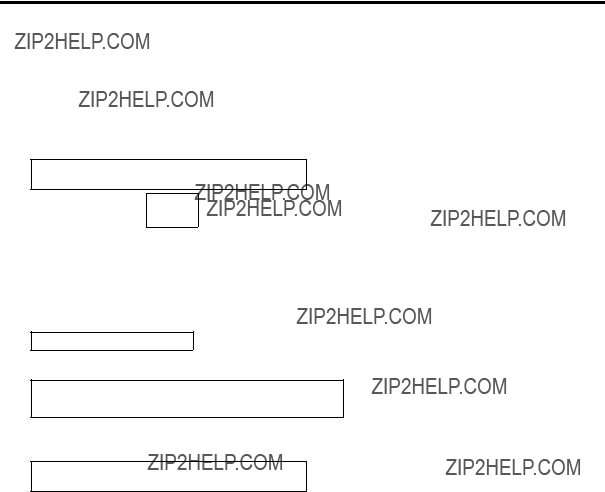
3. Basic operations
??????Insert the SD memory card which has been initialized by the unit, into the SD memory card slot.
??????Press the [SDCard] button to light its indicator and display the SDCard menu. ??? Refer to
??????Turn [F1] to display the File sub menu.
??????Turn [F2] to select ???Save??? using the Mode item, and then press the [F2] switch.
<Menu display>
SDCard 1|Mode??? |Select |SaveFile Exec???
File | ???Save|
FMEM1~4
SetUp
??????Turn [F3] to select the data which is to be stored on the SD memory card using the Select item.
FMEM1 to 4: Still image data in frame memories 1 to 4
SetUp: Setup data
??????If the [F5] switch is now pressed, the file is stored on the SD memory card. Filenames are provided automatically using the running number as shown below.
HS001.bmp to HS999.bmp
<Configuration of folder at storage destination>
System data: ???HS400\SETUP??? folder
Still image data: ???HS400\IMAGE??? folder
While the file is being stored, the following message and filename are displayed.
93
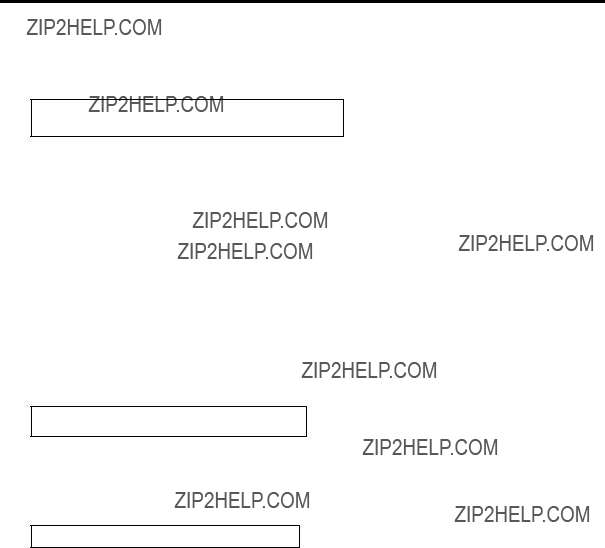
3. Basic operations
??????Insert the SD memory card on which the data is stored into the SD memory card slot. Load the file after its data has been stored in the each folder.
Data stored in other folders will not be recognized by the unit.
System data: ???HS400\SETUP??? folder
Still image data: ???HS400\IMAGE??? folder
??????On the SDCard menu, turn [F1] to display the File sub menu.
??????Turn [F2] to select ???Load??? using the Mode item, and then press the [F2] switch.
<Menu display>
??????Turn [F3] to select the transfer destination using the Select item.
??????Using the LoadFile item, turn [F4] to select the name of the file to be loaded.
If the name of the file to be loaded consists of more than 8 characters, a shortened version of the filename will be displayed.
??????If the [F5] switch is now pressed, the file is loaded from the SD memory card and stored in the unit???s internal memory.
While the file is being loaded, the following message and filename are displayed.
???Up to 999 files can be loaded.
???The following alphanumerics and symbols can be used as the characters for filenames (see below). Files using other characters will not be displayed by the unit.
<Characters which can be used for filenames>
A to Z, a to z, 0 to 9, Space, ! # $ % & ' ( )
94

3. Basic operations
??????Insert the SD memory card on which the data is stored into the SD memory card slot.
??????On the SDCard menu, turn [F1] to display the File sub menu.
??????Turn [F2] to select ???Delete??? using the Mode item, and then press the [F2] switch.
<Menu display>
??????Turn [F3] to select FMEM (still image data) or SetUp using the Select item.
If the name of the file to be loaded consists of more than 8 characters, a shortened version of the filename will be displayed.
??????Using the DelFile? item, turn [F4] to select the name of the file to be deleted.
??????Turn [F5] to select ???Yes???, then press the [F5] switch, and the file is now deleted.
??????Insert the SD memory card on which the data is stored into the SD memory card slot.
??????On the SDCard menu, turn [F1] to display the CardInfo menu.
<Menu display>
Images: The number of still image files stored on the SD memory card is displayed. The number of files that can be loaded using the unit is 999.
???Over999??? is displayed when an attempt is made to store 1000 or more files.
FreeSpace: The SD memory card???s total memory and remaining free space are displayed in megabyte units (MB).
(Free space/card???s total memory)
??????Press the [F5] switch, and the display of information of Images item and FreeSpace item is updated.
95

4. Input/output signal settings
IN1 to IN6 are SDI signal inputs.
IN A1, IN A2, IN B1 and IN B2 can be set only when one of the following option boards has been connected.
???
???
???
???
???
<List of settings by input signal>
96

4. Input/output signal settings
The frame synchronizer can be set to On or Off for each input.
The DVI input (option) frame synchronizer is permanently On. It cannot be set from On to Off or vice versa.
??????Press the [INPUT] button to light its indicator and display the INPUT menu. ??? Refer to
??????Turn [F1] to display the INPUT XX sub menu. (X: IN1 to IN16, A1, A2, B1 or B2)
The input used to set the frame synchronizer function is selected for X.
??????Turn [F2] to display the third menu of FS.
<Menu display>
??????Turn [F3] to set On or Off for the frame synchronizer using the FS item.
??? If the output signal phase is set to 0H, Off cannot be selected as the FS item setting.
AVDL function is active while the frame synchronizer function is set to Off.
The AVDL function automatically adjusts the input image signal phase to the horizontal synchronization reference signal phase.
For details, refer to
97

4. Input/output signal settings
The mode can be set for each input only when HD has been selected as the system format. When SD is selected as the system format, the input mode is always the same as Normal.
Normal: Input signals in conformity with the system format take effect.
D by D: When SD signals with the same frame rate as the system format have been input, they are input on a dot by dot (1??? magnification) basis with no
(This setting is only possible when the system format is 1080i.)
In this mode, there is minimal deterioration in the image quality and, as such, the mode is used to combine SD format material using the PinP function.
UC: When SD signals with the same frame rate as the system format have been input, they are
Auto: Input signals in conformity with the system format take effect.
Furthermore, if SD signals with the same frame rate as the system format are input when HD is selected as the system format, they are
??? In the Auto mode, the images may be disturbed when the input signals are switched.
??????On the INPUT XX sub menu, turn [F4] to set the input mode using the Mode item, and press the [F4] switch to enter the setting.
An asterisk (???) appears at the left of the input mode currently selected.
<List of input modes supported>
?????? denotes a black screen.
???The UC mode or Auto mode cannot be selected for inputs 1 to 4.
???If D by D, UC or Auto mode is selected, the frame synchronizer will be turned on.
???The input mode cannot be changed when freeze is set to on.
98

4. Input/output signal settings
The input signals can be frozen and used.
While signals are frozen, the tally signals of the corresponding input will not be output.
Setting freeze
??????Press the [INPUT] button to light its indicator and display the INPUT menu. ??? Refer to
??????Turn [F1] to display the INPUT XX sub menu. (X: IN1 to IN16, A1, A2, B1 or B2)
The input used to set the freeze function is selected for X.
??????Turn [F2] to display the third menu of Freeze.
<Menu display>
INPUT XX|Freeze |Select |Freeze???|
??????Turn [F3] to select the freeze method using the Select item.
Frame: The images are frozen frame by frame.
Field: The images are frozen field by field. This is used to freeze moving images.
With interlace signals, however, diagonal lines and moving parts appear jagged.
Frame or Field can also be selected while an image is frozen.
??????Press the [F4] switch to freeze the input image or cancel the freeze.
If the [F4] switch is pressed while the display is ???Off???, the video signal is frozen, and the display is set to ???On???.
If the [F4] switch is pressed while the display is ???On???, the video signal freezing is canceled, and the display is set to ???Off???.
The ???F??? mark appears in front of the name of the material when the signals set for output of multi view displays are frozen.
???When the unit is used with the frame synchronizer function OFF, the output images may be disturbed when freezing is executed, but the frozen images will not be adversely affected.
???If, when the switcher is used with the frame synchronizer function at OFF, ???On??? is set as the freeze setting, the frame synchronizer function will be automatically switched to ON.
99

4. Input/output signal settings
When the color corrector is enabled, the colors of the input video signals can be corrected. This function can be set for the signals that are input to IN9 to IN16.
Enabling the color corrector
??????Press the [INPUT] button to light its indicator and display the INPUT menu. ??? Refer to
??????Turn [F1] to display the INPUT XX sub menu. (X: IN9 to IN16)
The input used to enable the color corrector function is selected for X.
??????Turn [F2] to display the third menu of FS.
<Menu display>
??????Turn [F5] to select On using the CC item.
On: The color corrector function is enabled.
Off: The color corrector function is disabled.
???When the color corrector function in enabled (CC item is set to On), the ClorCnv item on the third CC menu is automatically set to On as well.
When the ClorCnv item on the third CC menu is set to Off, the CC item on the third FS menu is automatically set to Off as well.
<Menu display>
Off
100

4. Input/output signal settings
Process control
???Adjusting the Y signal gain and setting its slice level
??????On the INPUT XX sub menu, turn [F2] to display the third menu of CC Prc1.
<Menu display>
INPUT XX|CC
0.0???7.0
| |
200.0108.0
??????Turn [F3] to set the gain value of the Y signal using the
??????Turn [F4] to set the slice level using the Slice item.
???Adjusting the gain and hue of the C signal
??????On the INPUT XX sub menu, turn [F2] to display the third menu of CC Prc2.
<Menu display>
200.0359.9
??????Turn [F3] to set the gain value of the C signal using the
??????Turn [F4] to set the hue value using the Hue item.
101

4. Input/output signal settings
Tone curve
The gray scale of the input images can be compensated. Set the tone curve, and adjust the image brightness, contrast and other characteristics.
GrayPos
WhiteLv
Furthermore, by adjusting each of the R, G and B colors separately, the white balance and color tone can be adjusted.
??????On the INPUT XX sub menu, turn [F2] to display the third menu of CC Trn1.
<Menu display>
Output level
BlackLv
GrayLv
Input level
??????Turn [F3] to select the color to be compensated using the RGB item.
R: red, G: green, B: blue
??????Turn [F4] to set the compensation mode using the Manual item.
ALL: The R, G and B colors are all set to the same value.
When the mode has been set to ALL, the colors set using the RGB item are canceled.
Free: Each of the R, G and B colors is set separately.
??????Turn [F5] to set the gray level position using the GrayPos item.
??????Turn [F2] to display the third menu of CC Trn2.
<Menu display>
INPUT XX|CC Trn2|BlackLv|GrayLv |WhiteLv
| 10/13 | 0.00| 0.50| 1.00
0.500.75 1.00
??????Turn [F3] to set the black level using the BlackLv item.
??????Turn [F4] to set the gray level using the GrayLv item.
??????Turn [F5] to set the white level using the WhiteLv item.
102

4. Input/output signal settings
Adjusting the color matrix item gain
??????On the INPUT XX sub menu, turn [F2] to display the third menu of CC MTX1.
<Menu display>
??????Turn [F3] to set the matrix item
??????Turn [F4] to set the matrix item
??????In the same way, set the matrix item
103

4. Input/output signal settings
Select the settings for INPUT13 to 16, as well as for the
???
???
???
??????Press the [INPUT] button to light its indicator and display the INPUT menu. ??? Refer to
<Menu display>
INPUT XX|UpConv1|Scale |MovDet???|Sharp???
??????Turn [F1] to display the INPUT XX sub menu. (X: IN1 to IN16, A1, A2, B1 or B2)
The input used to set the
??????Turn [F2] to display the third menu of UpConv1.
??????Turn [F3] to select the scaling system using the Scale item, and press the [F3] switch to enter the selection.
SQ (squeeze): The image is enlarged both horizontally and vertically to fill the entire screen.
EC (edge crop): The aspect ratio of the image is maintained, the image size is increased in accordance with the vertical resolution, and black bands are added at the left and right.
LB (letter box): The aspect ratio of the image is maintained, the image size is increased in accordance with the horizontal resolution, and the image is cropped at the top and bottom.
??????Turn [F4] to set the image movement detection sensitivity using the MovDet item, and press the [F4] switch to enter the selection.
1: Toward still images ??? 3: standard ??? 5: toward moving images
??????Turn [F5] to set the extent of the edge sharpness for the images using the Sharp item, and press the [F5] switch to enter the selection.
1: Not sharp edges ??? 3: standard ??? 5: very sharp edges
104

4. Input/output signal settings
??????On the INPUT XX sub menu, turn [F2] to display the third menu of UpConv2.
<Menu display>
??????Turn [F3] to select the image position using the
Center: The image is positioned at the center, and black images are added at the left and right.
Right: The image is positioned at the right, and a black image is added at the left.
Left: The image is positioned at the left, and a black image is added at the right.
When the analog input board (option) has been connected, the gain of the input signals can be set. Alternatively, when the analog composite input board (option) has been connected, the gain of the Y signals can be set.
The setting range is ??30 steps, and the gain changes by approximately ??2 dB. The amount of change in the gain when it is changed by one step is not fixed.
??????Press the [INPUT] button to light its indicator and display the INPUT menu. ??? Refer to
??????Turn [F1] to display the INPUT XX sub menu. (X: A1, A2, B1 or B2)
The input used to set the gain is selected for X.
??????Turn [F2] to display the third menu of FS.
<Menu display>
??????Turn [F5] to set the gain of the input signal (Y signal gain) using the AnaGain item.
105

4. Input/output signal settings
When the analog composite input board (option) has been connected, the analog composite input signals can be set.
??????Press the [INPUT] button to light its indicator and display the INPUT menu. ??? Refer to
??????Turn [F1] to display the INPUT XX sub menu. (X: A1, A2, B1 or B2)
The input used to set the analog composite signal is selected for X.
??????Turn [F2] to display the third menu of Setting.
<Menu display>
???8~+7 ???100 ???30~+30
|
+100
??????Turn [F3] to adjust the chroma level using the Chroma item. (Maximum amount of variation: approx. ??3 dB)
The Auto Color Control function is activated, and the chroma level is kept at the value that has been set.
??????Turn [F4] to adjust the pedestal level using the Ped item. (Maximum amount of variation: approx. ??100 mV)
??????Turn [F5] to adjust the hue using the Hue item. (Maximum amount of variation: approx. ??20??)
Adjustment of Hue is possible when the system format is 1080/59.94i, 720/59.94p and 480/59.94i.
For details on the other settings, refer to the operating instructions of the optional board.
106

4. Input/output signal settings
Set the DVI input signals when the DVI input board (option) or full HD DVI input board (option) has been connected.
Signals with the following resolutions can be input.
If signals with any other resolution or frequency are input, the picture will turn black.
DVI Input Board (Digital/Analog)
???1080/59.94P (1920???1080), 59.94 Hz
???1080/50P (1920???1080), 50 Hz
??????Press the [INPUT] button to light its indicator and display the INPUT menu. ??? Refer to
??????Turn [F1] to display the INPUT XX sub menu. (X: A1, A2, B1 or B2)
The input used to set the DVI signals is selected for X.
??????Turn [F2] to display the third menu of DVIIn.
<Menu display>
??????Turn [F3] to select the signal system using the Mode item.
???Set this when the DVI input board
Dig: Digital input signals of the DVI connector are effective.
Ana: Analog input signals of the DVI connector are effective.
107

4. Input/output signal settings
??????Turn [F4] to select the scaling method.
Full: The size of the input images is increased or reduced in accordance with the system resolution. (The aspect ratio of the input images is not kept the same. The rate at which the image size is increased or reduced in the vertical direction and in the horizontal direction differs.)
For details on the sizes that correspond to the formats, refer to ???DVI input scaling size table??? on the next page.
??????The black level (offset) and white level (gain) of the analog input signals are adjusted automatically. ??? Set this when the DVI input board
Depending on the personal computer used, there may be some deviation from the correct levels of the black level or white level.
To proceed with automatic adjustment to correct this deviation, display the
When using the
When using the
Before making any adjustments, follow the instructions given in the ???Automatic adjustment of the black level??? section.
Automatic adjustment of the black level
Input the
Turn [F5] to select ???Black??? in the Auto item, and press [F5] to adjust the black level automatically.
?????? During Auto Setting ?????? is displayed on the LCD while adjustments are being made.
Automatic adjustment of the white level
Input the
Turn [F5] to select ???White??? in the Auto item, and press [F5] to adjust the white level automatically.
?????? During Auto Setting ?????? is displayed on the LCD while adjustments are being made.
Initializing the adjusted values
Turn [F5] to select ???Init??? in the Auto item, and press [F5] to return the adjusted values to their factory settings.
?????? During Auto Setting ?????? is displayed on the LCD while adjustments are being made.
108

4.Input/output signal settings
???DVI input scaling size table
Full
 : Black images are inserted here.
: Black images are inserted here.
 : The parts of the images protruding in these areas are cropped.
: The parts of the images protruding in these areas are cropped.
109

4. Input/output signal settings
 : Black images are inserted here.
: Black images are inserted here.
 : The parts of the images protruding in these areas are cropped.
: The parts of the images protruding in these areas are cropped.
110

4. Input/output signal settings
Adjust the clock/phase and position of the
??????Press the [INPUT] button to light its indicator and display the INPUT menu. ??? Refer to
??????Turn [F1] to display the INPUT XX sub menu. (X: A1, A2, B1 or B2)
The input used to set the clock phase and position is selected for X.
??????Turn [F2] to display the third menu of DVIPhs.
<Menu display>
INPUT XX|DVIPhs |ClkPhs
??????Turn [F3] to adjust the clock phase of the analog input signals using the ClkPhs item. While viewing the image quality, set the value at which the noise level is minimized.
??????Turn [F4] to adjust the horizontal position using the
??????Turn [F5] to adjust the vertical position using the
111

4. Input/output signal settings
OUT1 to OUT4 are SDI signal outputs. OUT5 and OUT6 are
OUT A1, OUT A2, OUT B1 and OUT B2 can be set only when one of the following option boards has been connected.
???
???
???
<List of settings by output signal>
112

4. Input/output signal settings
Assign the output signals to OUTPUT1 to OUTPUT10.
??????Press the [OUTPUT] button to light its indicator and display the OUTPUT menu. ??? Refer to
??????Turn [F1] to display the OUTPUTYY sub menu. (Y: OUT1 to OUT6, A1, A2, B1 or B2)
The output used to assign the output signal is selected for Y.
??????Turn [F2] to display the Asign sub menu.
<Menu display>
??????Turn [F3] to set the type of output signal using the Source item.
PGM: An image provided with the wipe, mix, key, downstream key or other effect is output at the switcher's main line output.
PVW: This is the preview output that enables the next operation to be checked before it is executed.
AUX 1 to 4: The signals selected by the AUX bus in lines 1 to 4 are output.
CLN: The clean signal (the image resulting when the key, downstream key or other effect has been removed from the PGM signal) is output.
??? Refer to ???Assigning the CLN signal???.
MV 1, MV 2: The multi view display signals in two lines are output.
Multiple input signals and output signals are reduced in size and output to one screen. KeyOut: The key signal is output.
113

4. Input/output signal settings
??????When the SDI output board (option) has been connected, turn [F4] to set the output mode using the Mode item, and press the [F4] switch to enter the setting.
An asterisk (???) appears on the left of the currently selected output mode.
Normal: The same signals as the system format signals are output.
DC
When the system format is 1080/59.94i or 720/59.94p, the signals are output in the 480/59.94i format.
When the system format is 1080/50i or 720/50p, the signals are output in the 576/50i format. When the system format is SD (480/59.94i or 576/50i), this setting cannot be selected.
Assigning the CLN signal
Set KEYCLN, DSK1CLN or DSK2CLN as the CLN output.
??????Press the [CONFIG] button to light its indicator and display the CONFIG menu. ??? Refer to
??????Turn [F1] to display the CLNAsign sub menu.
<Menu display>
??????Turn [F2] to select the type of output signal using the CLN item.
114

4. Input/output signal settings
(OUT5 and OUT6 standard outputs and options)
Set the DVI output signals of the OUT5 and OUT6 standard outputs and the DVI output signals if the DVI/analog output board (option) has been connected.
??????Press the [OUTPUT] button to light its indicator
and display the OUTPUT menu.
??? Refer to
??????Turn [F1] to display the OUTPUTYY sub menu. (Y: OUT5, OUT6, A1, A2, B1 or B2)
The output that supports the DVI signal is selected for Y.
??????Turn [F2] to display the third menu of DVIOut.
<Menu display>
OUTPUTYY|DVIOut |Mode |Size??? |Scale???
|2/2 | ???Dig| ???Auto|
??????Turn [F3] to select the signal system using the Mode item, and press the [F3] switch to enter the selection. ??? Set this when the DVI/analog input board
Dig: DVI digital signals are output from the DVI connector.
Ana: DVI analog signals (RGB) are output from the DVI connector.
When ???Ana??? has been selected, the display position of the image may be off depending on the monitor which is connected. If it is off, adjust the position at the monitor.
For details on the adjustment method, refer to the operating instructions of the monitor.
??????Turn [F4] to select the resolution of the images to be output, and press the [F4] switch to enter the selection.
Auto: The equipment information of the output destination is captured by the DVI signals, and the images are output at the optimum resolution. (The vertical frequency is 60 Hz, and the maximum resolution is SXGA for analog output signals and WUXGA for digital output signals.)
If the equipment information cannot be captured or if the resolution and frequency which can be output by the product are not contained in the equipment information, the images will be output at the XGA setting.
XGA: The images are output at the 1024???768 resolution and 60 Hz frequency.
WXGA: The images are output at the 1280???768 resolution and 60 Hz frequency.
SXGA: The images are output at the 1280???1024 resolution and 60 Hz frequency.
WSXGA+: The images are output at the 1680???1050 resolution and 60 Hz frequency. (This can be selected only when digital signals are output.)
UXGA+: The images are output at the 1600???1200 resolution and 60 Hz frequency. (This can be selected only when digital signals are output.)
WUXGA: The images are output at the 1920???1200 resolution and 60 Hz frequency. (This can be selected only when digital signals are output.)
1080/59.94P: The images are output at the 1920???1080 resolution and 59.94 Hz frequency. (Only OUT5 and OUT6 can be selected.)
1080/50P: The images are output at the 1920???1080 resolution and 50 Hz frequency. (Only OUT5 and OUT6 can be selected.)
115
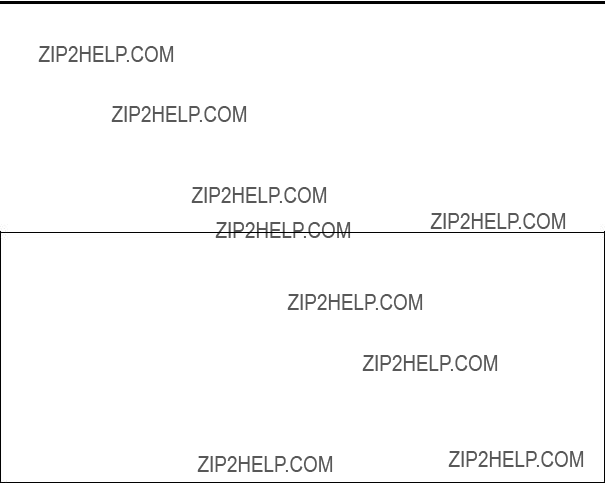
4. Input/output signal settings
??????Turn [F5] to select the scaling method, and press the [F5] switch to enter the selection.
(Black bands are inserted into the areas where there are no images. The protruding parts of the images are cropped.)
(Black bands are inserted into the areas where there are no images. The protruding parts of the images are cropped.)
Full: The size of the output images is increased or reduced in accordance with the system resolution. (The aspect ratio of the output images is not maintained. The rate at which the image size is increased or reduced in the vertical direction differs from that in the horizontal direction.)
??? Select the settings below is cases where
??????Turn [F2] to display the Asign sub menu.
<Menu display>
??????Turn [F4] to set the video movement detection sensitivity using the MovDet item, and press the [F4] switch to enter the setting.
1: Sensitivity closer to still image ??? 3: standard ??? 5: sensitivity closer to moving images
116

4. Input/output signal settings
Select the settings for the
??????Turn [F3] to select the scaling system using the Scale item, and press the [F3] switch to enter the setting.
SQ (squeeze):
The top, bottom, left and right are reduced so that the aspect ratio is set to 4:3.
EC (edge crop):
The aspect ratio is maintained, the image is reduced in size in line with the vertical resolution, and it is cropped at the left and right.
LB (letter box):
The aspect ratio is maintained, the image is reduced in size in line with the horizontal resolution, and a black image is added at the top and bottom.
??????Turn [F4] to set the delay time of the output using the Delay item, and press the [F4] switch to enter the setting.
90H (75H): When the system format is 1080/59.94i, the image is delayed from the system image (HD) by 90H, and output.
When the system format is 720/59.94p, the image is delayed from the system image (HD) by 90H+1F (frame), and output.
When the system format is 1080/50i, the image is delayed from the system image (HD) by 75H, and output.
When the system format is 720/50p, the image is delayed from the system image (HD) by 75H+1F (frame), and output.
When the system format is 1080/50i or 720/50p, ???75H??? is displayed on the menu. 1F: The image is output
For details on the phase and delay amounts, refer to
??????Turn [F5] to set the degree of sharpness of the edges for the image using the Sharp item, and press the [F5] switch to enter the setting.
1: Standard up to 5: sharper edges
For details on the other settings, refer to the operating instructions of the optional board.
117

4. Input/output signal settings
The sync signals to be used by the system can be selected.
External sync: For synchronization with an external sync signal
The reference input signal is looped through and output.
BBST: Black burst signal (vertical phase of 0H)
BBAD: Black burst signal
Vertical phase of 90H when the 59.94i or 59.94p format is selected; vertical phase of 75H when the 50i or 50p format is selected
TRI:
This can be selected when HD format signals are supplied.
Internal sync: For synchronization with an internal reference signal (INT).
The REFOUT signal (black burst signal) is output from the two reference connectors.
??????Press the [SYSTEM] button to light its indicator and display the SYSTEM menu. ??? Refer to
??????Turn [F1] to display the Ref sub menu.
<Menu display>
??????Turn [F2], select the sync signal using the Sync item, and press the [F2] switch to enter the selection. An asterisk (???) appears at the left of the reference signal currently selected.
??????Turn [F3] to select the setup level of the black burst signal in the internal synchronization mode using the BBSetup item.
This setting takes effect when the video system is 59.94i or 59.94p. The setup level is fixed at 0 IRE when the system is 50i or 50p.
??????The genlock status is displayed in the GenLock item.
Locked: Synchronized with the external sync signal or internal reference signal.
UnLock: Not synchronized with the external sync signal or internal reference signal.
???When 1080/23.98PsF or 24PsF is selected as the format, INT (internal synchronization) cannot be selected in the SYNC item of the REF sub menu.
???This unit supports synchronization signals for field frequencies that are same as those of the system format. When the unit is set to the 1080/23.98PsF format, however, the unit also supports black burst signals with
118

4. Input/output signal settings
The phase of the output video signals can be adjusted.
??????Press the [SYSTEM] button to light its indicator and display the SYSTEM menu. ??? Refer to
??????Turn [F1] to display the OutPhs sub menu.
<Menu display>
??????Turn [F2], and select 0H or 1H using the System item.
0H: The output video signals are output to the system REF signal with using
1H: The output video signals are output to the system REF signal with 1H delay.
When the frame synchronizer function is ON, the output video signals are output with 1 frame + 1H delay.
??????Turn [F3] to adjust H phase using the
??? The setting displayed on the menu differs depending on the video format.
??????Turn [F4] to adjust V phase using the
119
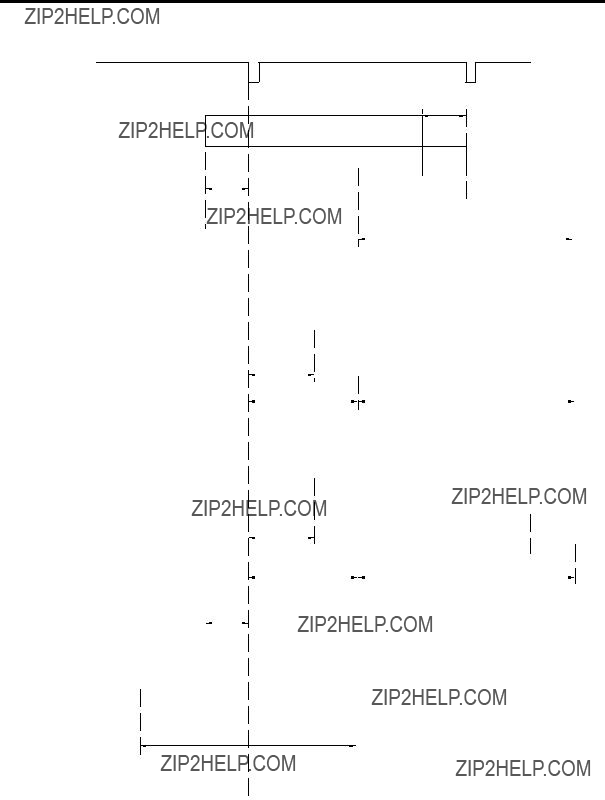
4. Input/output signal settings
<Phase adjustment setup>
REF (System standard)
Approx. 0.2H
Output Phase Variable Range
H Phase
V Phase (??100 lines)
REF Phase Reference
AVDL Range: Range for automatic phase adjustment.
120

4. Input/output signal settings
<Phases and delay amounts of input/output signals during HD format use>
Frame synchronizer
Input signals
???
??? See
???For 1080/50i and 720/50p, the 90H indicated above becomes 75H.
???Conversion based on the HD format applies for 1H.
???When DVE effect, IMAGE effect and PinP effect have been used as the video effects, the output signal is delayed by +1F.
???The phase and delay amount for the DVI input signals are the same as when UC/D by D is selected since the frame synchronizer is set to the On mode.
???The DVI output signals are delayed by +1F.
???When images are output to a multi view display, they are delayed by +1F.
???When DVI output signals are output images for a multi view display, the output images are delayed by +2F.
121
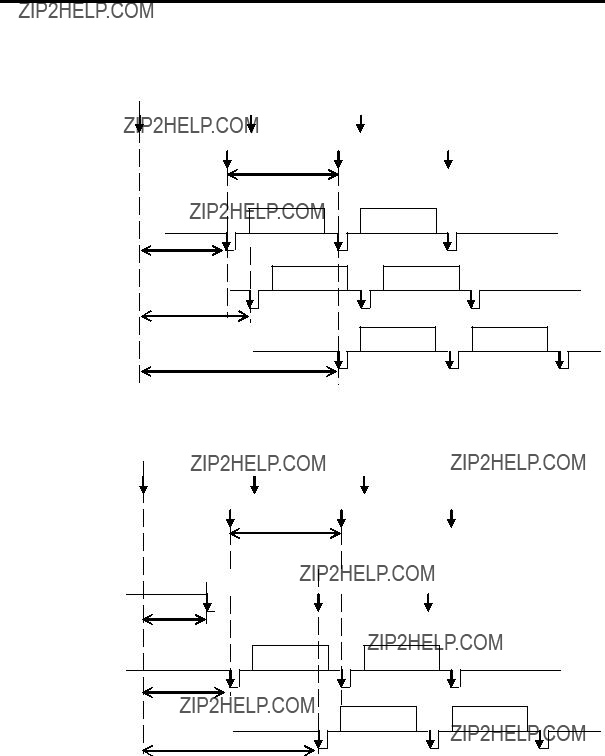
4. Input/output signal settings
<Phase relationship between input signals and output signals>
(for 1080/59.94i format)
(Example 1)
Input signals
Sync signal (Ref)
Output signal ???
Output signal ??? (90H)
Output signal ??? (1F)
(Example 2)
Input signals
Sync signal (Ref)
Output signal ???
Output signal ??? (90H)
Output signal ??? (1F)
Max. 2F
1F (frame)
Max.
Max. 1F
Max.
122

4. Input/output signal settings
The input images, program images, preview images, etc. can be arranged on the screen of an external monitor and output to two lines (MV1 and MV2).
There are four multi view
Inputs 1 to 20, CBGD, CBAR, FMEM1 to 4, PGM, PVW,
A total of up to 20 subscreens for display as split screens can be set for MV1 and MV2.
(If MV1 is set to 16 split, MV2 will be set to the 4 split mode, and it is not possible to set the mode to 9 split or above.)
<Display modes>
123

4. Input/output signal settings
??????Press the [MV] button to light its indicator and display the MV menu. ??? Refer to
??????Turn [F1] to select the MV1 PATT or MV2 PATT sub menu depending on the multi view output signals to be set.
<Menu display>
??????Turn [F2] to set the
??????Turn [F4] to set the subscreens (??? to ???) using the Pos item.
??????Turn [F4] to set the names of the signals to be displayed on the subscreens using the Signal item.
???When AUX1 to AUX4 have been selected, the signal names listed below will be displayed on the LCD for the signals selected as the AUX output signals.
??? Refer to
???If, when AUX2 to AUX4 have been selected, the multi view display output (MV1 or MV2) is selected for the AUX bus (AUX2, AUX3, AUX4) output signal, the images of the AUX bus displayed on the subscreens of the multi view display will be black images.
124

4. Input/output signal settings
Set the frame, character brightness and background of the split screens to be displayed on the multi view display.
??????Press the [MV] button to light its indicator and display the MV menu. ??? Refer to
??????Turn [F1] to select the MV1 Frame or MV2 Frame sub menu depending on the multi view output signals to be set.
<Menu display>
??????Turn [F2] to set the split frame brightness and split frame display using the Frame item.
LUM (0%, 25%, 50%, 75%, 100%):
Select one of these settings for the brightness of the split frame (gray scale).
Off: The split frame is not displayed.
??????Turn [F3] to set the character brightness and character display using the Char item.
LUM (0%, 25%, 50%, 75%, 100%):
Select one of these character (gray scale) brightness settings.
???The ???!??? mark appears in front of the name of the material when no signals are input or signals with a different format are input.
???When signals amenable to camera control have been input, the ???c??? mark is displayed in front of the name of the material.
???When the input signal is frozen, the ???F??? mark is displayed in front of the name of the material.
???When the ???!??? mark is displayed, the ???c??? mark will not be displayed.
???When the ???F??? mark is displayed, the ???!??? mark and the ???c??? mark are not displayed.
Off: The characters are not displayed. Neither is the character background shown.
??????Turn [F4] to set whether the character background
On: The character background is displayed.
Off: The character background is not displayed.
125

4. Input/output signal settings
Set the tally displays to be superimposed onto the split frame of the multi view display. The red tally indicates material consisting of program outputs.
The green tally indicates material selected by the preset bus.
On the MV1 Frame or MV2 Frame sub menu, turn [F5] to set the tally displays using the Tally item.
<Menu display>
Red+GRN: Both the red tally and green tally are displayed.
Red: Only the red tally is displayed.
Off: No tally displays are shown.
???The red tally is not displayed during FTB operation while the program images have been completely faded out to a black screen. At this time, the green tally is displayed for images consisting of program images.
???The red tally and green tally signals are output from the tally output connector on the rear panel. ??? Refer to
126
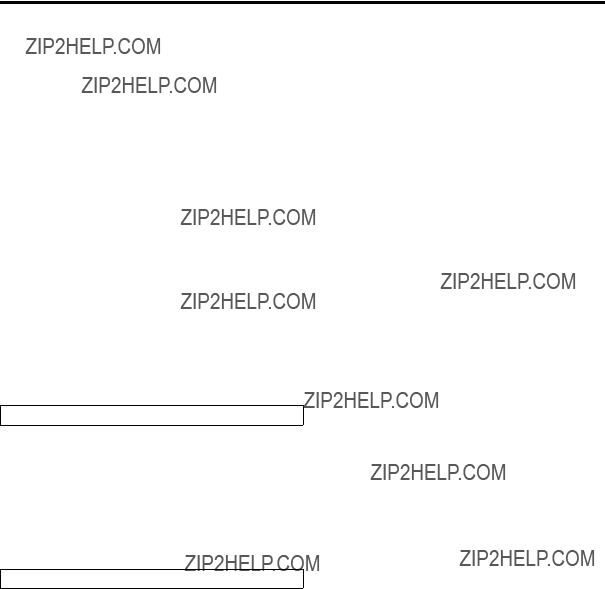
4. Input/output signal settings
Change the names of the INPUT1 to 20 materials that are to be set on the multi view display. The default settings, preset settings or user settings can be selected for these names.
When the preset settings and user settings are established, the material name (CAM1, etc.) display format is used.
??????Press the [INPUT] button to light its indicator and display the INPUT menu.
??? Refer to
??????Turn [F1] to display the INPUT XX sub menu. (X: IN1 to IN16, A1, A2, B1 or B2)
The signal with the material whose name is to be changed is selected for X.
??????Turn [F2] to display the Name sub menu.
<Menu display>
??????Turn [F3] to select the type of material name using the Type item, and press the [F3] switch to enter the type. An asterisk (???) appears at the left of the type of material name currently selected.
Defalt: The default settings for INPUT1 to INPUT16, INPUTA1, INPUTA2, INPUTB1 and INPUTB2 are selected.
Preset: The material names and number provided ahead of time are selected.
User: The material names are set using 7 characters.
If the Type item setting is changed when ???Preset??? or ???User??? is selected, the previously provided material names will be lost.
Preset type setting procedure
??????On the Name sub menu, turn [F3] to select ???Preset??? using the Type item.
??????Turn [F4] to select the material name using the Name item.
??????Turn [F5] to select the material number using the NO. item, and press the [F5] switch to enter the number.
User type setting procedure
??????On the Name sub menu, turn [F3] to select ???User??? using the Type item.
??????Turn [F4] to move the ????????? cursor to the position of the character to be changed using the Name item.
??????Turn [F5] to select the character, and press the [F5] switch to enter it.
??????Set all the characters in the material name by repeating steps ??? and ???.
<Menu display>
127

4. Input/output signal settings
When the system mode is set to SD, the
MV1 and MV2 cannot be set for any other outputs.
??? These settings can be established when SD serves as the system mode.
??????Press the [SYSTEM] button to light its indicator and display the SYSTEM menu. ??? Refer to
??????Turn [F1] to display the Format sub menu.
<Menu display>
??????Turn [F4] to set On or Off using the HiRes item, and press the [F4] switch.
128
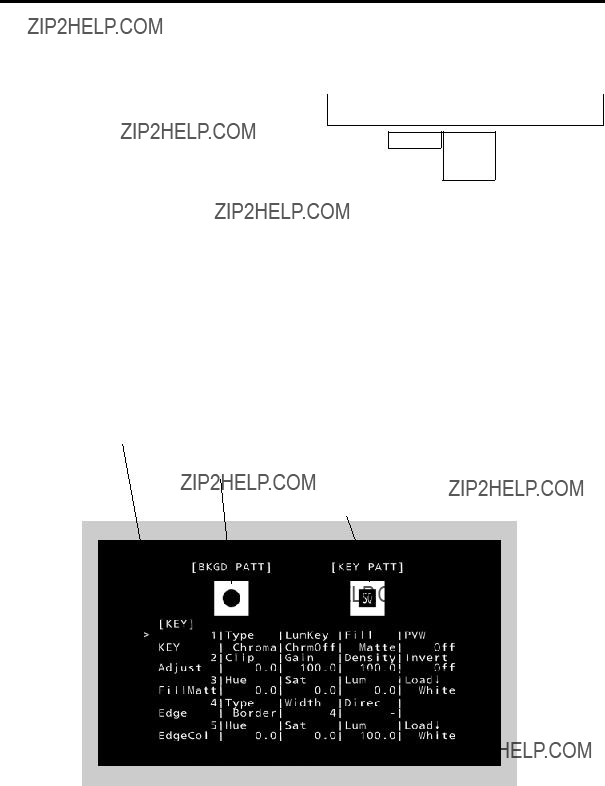
4. Input/output signal settings
The menu screen can be superimposed onto the preview output or multi view display 1 or 2 output for display.
??????Turn [F1] to display the OSD sub menu.
??????Turn [F2] to set whether to display the OSD usingOff the OSD item.
On: OSD is displayed.
Off: OSD is not displayed.
This function can be assigned to a user button. ??? See
??????Turn [F3] to set the output destination using the Select item.
PVW: The menu screen is superimposed onto the preview output, and output.
MV1: The menu screen is superimposed onto multi view display output 1, and output.
MV2: The menu screen is superimposed onto multi view display output 2, and output.
MV1+2: The menu screen is superimposed onto both multi view display outputs 1 and 2, and output.
???When On is selected as the OSD item setting, the multi view display split frame are not displayed on the monitor.
???Examples of OSD displays
???>??? appears to the left of the selected menu.
This indicates the wipe pattern for the background transition.
This indicates the wipe pattern for the key transition.
129
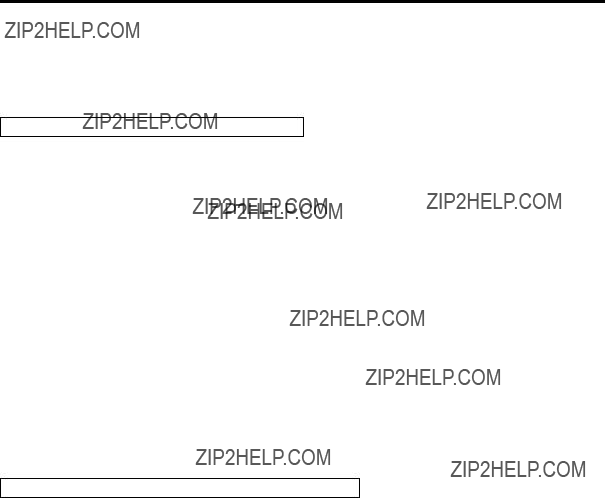
4. Input/output signal settings
In this section, the function for allowing the ancillary data of the SDI input signals to pass through is set.
If SD format signals are input while the HD format has been set as the system format, it will not be possible for their ancillary data to be passed through.
Setting the V ancillary data
It is possible to decide whether to allow the V ancillary data, which is superimposed in the vertical blanking period of the input images, to pass through the PGM bus.
The background bus data which is output to program (PGM) is passed through for images whose transition has been cut off.
During a transition, the background bus data which was output to program (PGM) immediately before is passed through.
??????Press the [SYSTEM] button to light its indicator and display the SYSTEM menu. ??? Refer to
??????Turn [F1] to display the Anci sub menu.
<Menu display>
??????Turn [F2] to select On or Off for the V ancillary data using the VAnci item.
On: In the case of the HD format, the ancillary data starting with line 10 is passed through. In the case of the SD format, the ancillary data starting with line 14 is passed through.
Off: The data is not passed through.
Setting the embedded audio data
The embedded audio data of the SDI input signals can be passed through the AUX bus.
??????On the Anci sub menu, turn [F3] to select On or Off for the embedded audio data using the E.Audio item.
<Menu display>
On: The data is passed through.
Off: The data is not passed through.
When ???On??? has been selected, the V ancillary data of the input images is also passed through at the same time.
130
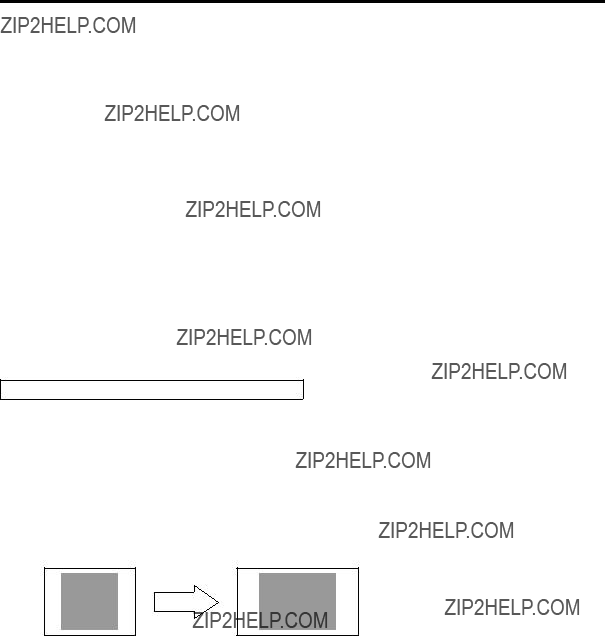
5. System settings
One system (input/output signal) video format can be selected.
??????Press the [SYSTEM] button to light its indicator and display the SYSTEM menu. ??? Refer to
??????Turn [F1] to display the Format sub menu.
<Menu display>
??????Turn [F2], select the format using the Mode item, and press the [F2] switch to enter the selection. An asterisk (???) appears at the left of the format currently selected.
Setting the 16:9 squeeze mode
When the 16:9 squeeze mode is selected, a border width (wipe or PinP) is established that considers cases where SD format images are to be converted into the 16:9 aspect ratio and used.
This setting is possible when SD is selected as the system format setting.
On the Format sub menu, turn [F5] to select whether to support the squeeze mode using the 16:9SQ item.
On: The squeeze mode is supported.
Off: The squeeze mode is not supported.
Border width (graphical representation) when the squeeze mode is supported
131

5. System settings
External video input signals and internally generated signals can be assigned to crosspoint buttons 1 to 32.
Displaying the assignment statuses
??????Press the [XPT] button to light its indicator and display the XPT menu. ??? Refer to
??????Turn [F1] to display the
The status of the assignment is displayed. The names of the assigned signals are abbreviated on the display.
<Menu display>
When one of the crosspoint buttons 1 to 32 is held down for a long time, the name of the signal assigned is displayed on the LCD while the button is held down.
Example: When crosspoint button 1 is pressed (when the INPUT1 signal has been assigned to this button)
???SHIFT??? will be displayed for XPT16 when the SHIFT function has been assigned to the crosspoint 16 button.
Assigning signals to the crosspoints
??????Press the [XPT] button to light its indicator and display the XPT menu.
??? Refer to
??????Turn [F1] to display the XPTAsign sub menu.
??????Turn [F2], select the crosspoint button using the XPT item, turn [F3] and select the input signal using the Signal item.
Changing the current assignment of the signals selected by the crosspoint buttons will cause the positions of the lighted crosspoint buttons to change to correspond with the assignment
change. The images output at this time will remain unchanged.
<Menu display>
132

5. System settings
The table below lists the materials which can be assigned.
???The image will not be changed by pressing any button to which ???NoAsign??? is assigned.
???If the multi view display output (MV1 or MV2) is selected as the AUX bus (AUX2, AUX3, AUX4) output signal when the AUX2 to AUX4 output signals have been assigned for the multi view display output (MV1 or MV2), a black image will be displayed as the image of the AUX bus that appears on the subscreen of the multi view display.
The table below lists the default settings.
133

5. System settings
The timing at which the crosspoints are to be switched can be set.
??????Press the [XPT] button to light its indicator and display the XPT menu. ??? Refer to
??????Turn [F1] to display the XPTSwch sub menu.
<Menu display>
??????Turn [F2], and select the switching timing using the Timing item.
Any: The crosspoints are switched in the nearest field. This is suited to live applications.
Field1: The crosspoints are switched in field 1. This is suited to editing applications.
Field2: The crosspoints are switched in field 2. This is suited to editing applications.
134

5. System settings
The user can assign several functions which can be set using the menu items into six user buttons (USER 1 to USER 6).
The user buttons light in amber when the assigned function is ON and are off when the assigned function is OFF. Each time the user button is pressed, the function setting alternates between ON and OFF.
The table below lists the functions which can be assigned to the user buttons (USER 1 to USER 6).
135

5. System settings
<Setting method>
??????Press the [CONFIG] button to light its indicator and display the CONFIG menu. ??? Refer to
??????Turn [F1] to display the Button1 sub menu and Button2 sub menu.
<Menu display>
CONFIG 8|USER1 |USER2 |USER3 |
Button1 |PinPPVW|DSK1PVW| OSD|
DSK1PVW PinPPVW PinPPVW
DSK2PVW DSK2PVW DSK1PVW
GPIMIEN GPIMIEN
GPIMOEN GPIMOEN GPIMIEN
GPIPIEN GPIPIEN GPIMOEN
GPIPOEN GPIPOEN GPIPIEN
OSD OSD GPIPOEN
StrFM1 StrFM1 StrFM1
StrFM2 StrFM2 StrFM2
StrFM3 StrFM3 StrFM3
StrFM4 StrFM4 StrFM4
SHIFT SHIFT SHIFT
AUXTRAN AUXTRAN AUXTRAN
NoAsign NoAsign NoAsign
CONFIG 9|USER4 |USER5 |USER6 |
Button2
PinPPVW PinPPVW PinPPVW
DSK1PVW DSK1PVW DSK1PVW
DSK2PVW DSK2PVW DSK2PVW
GPIMIEN
GPIMOEN GPIMIEN GPIMIEN
GPIPIEN GPIMOEN GPIMOEN
GPIPOEN GPIPIEN GPIPIEN
OSD GPIPOEN GPIPOEN
StrFM1 OSD OSD
StrFM2 StrFM2 StrFM1
StrFM3 StrFM3 StrFM2
StrFM4 StrFM4 StrFM3
SHIFT SHIFT StrFM4
AUXTRAN AUXTRAN AUXTRAN
NoAsign NoAsign NoAsign
??? Button1 sub menu
??????Turn [F2] to select the function to be assigned to the USER 1 button using the USER1 item.
??????Turn [F3] to select the function to be assigned to the USER 2 button using the USER2 item.
??????Turn [F4] to select the function to be assigned to the USER 3 button using the USER3 item.
??? Button2 sub menu
??????Turn [F2] to select the function to be assigned to the USER 4 button using the USER4 item.
??????Turn [F3] to select the function to be assigned to the USER 5 button using the USER5 item.
??????Turn [F4] to select the function to be assigned to the USER 6 button using the USER6 item.
136

5. System settings
The user can set the date and time to be used as the SD memory card???s time stamp. Be absolutely sure to set them when an SD memory card is to be used.
Setting the date
??????Press the [SYSTEM] button to light its indicator and display the SYSTEM menu. ??? Refer to
??????Turn [F1] to display the Date sub menu.
??????Turn [F2] to set the year using the Year item.
??????Turn [F3] to set the month using the Month item.
??????Turn [F4] to set the day using the Date item.
??????Press the [F5] switch to enter the year/month/day.
<Menu display>
Setting the time
??????Press the [SYSTEM] button to light its indicator and display the SYSTEM menu. ??? Refer to
??????Turn [F1] to display the Time sub menu.
??????Turn [F2] to set the hour using the Hour item.
??????Turn [F3] to set the minutes using the Minute item.
??????Turn [F4] to set the seconds using the Second item.
??????Press the [F5] switch to enter the hour/minutes/seconds.
<Menu display>
137

5. System settings
Proceed with the network settings to perform such tasks as updating the software version via LAN. The network initial setup is: IP address: 192.168.0.10, subnet mask: 255.255.255.0.
When using the host computer with settings matching the network setup, it is not necessary to setup via the menu.
For the setting to take effect, the system must be rebooted. Turn the system???s power off and then back on.
Setting the IP address
??????Press the [SYSTEM] button to light its indicator and display the SYSTEM menu. ??? Refer to
??????Turn [F1] to display the Network1 sub menu.
??????Turn [F2] to [F5] to set the IP address, and press the [F5] switch (Save) to enter the address.
<Menu display>
Setting the subnet mask
??????On the SYSTEM menu, turn [F1] to display the Network2 sub menu.
??????Turn [F2] to [F5] to set the subnet mask, and press the [F5] switch (Save) to enter the mask.
<Menu display>
Display the MAC address
??????On the SYSTEM menu, turn [F1] to display the Network3 sub menu. The MAC address now appears.
<Menu display> (When the MAC address is ???008045448000???.)
SYS 9|MAC Address
NetWork3| 008045448000
138
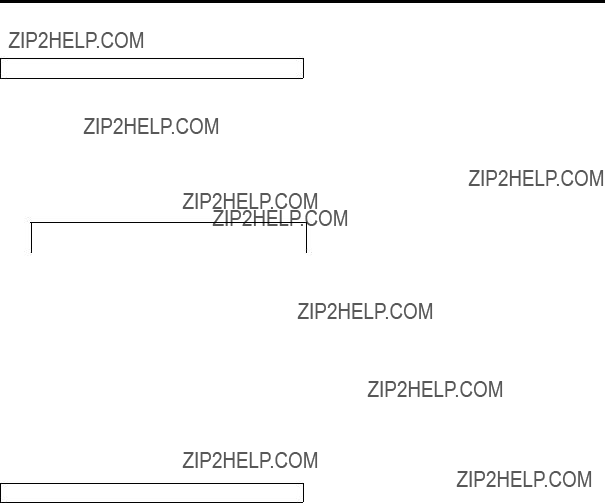
5. System settings
Setting the LCD backlight
The LCD backlight can be set to ON or OFF.
It is also possible to automatically turn off the LCD backlight when no control panel operation is performed within a set time interval.
??????Press the [CONFIG] button to light its indicator and display the CONFIG menu. ??? Refer to
??????Turn [F1] to display the Operate sub menu.
<Menu display>
CONFIG
??????Turn [F3] to select the setting for the backlight in the
On: Backlight is turned on all the time.
Off: Backlight is turned off all the time.
60, 120, 180:
When no control panel operation is performed within a set time interval (60 minutes, 120 minutes, 180 minutes), the LCD backlight is turned off automatically.
Even when the set time interval elapses and the LCD backlight is turned off, the backlight comes back on when a control operation is performed.
Menu delegation settings
The enable/disable setting for the menu delegation function is selected.
??????Turn [F4] to select the enable/disable setting for the menu delegation function in the MENUDLG item.
On: Enabled, Off: Disabled
139

5. System settings
Set up the control of the external devices (editor,
??????Press the [CTL] button to light its indicator and display the CTL menu. ??? Refer to
??????Turn [F1] to display the RS422 sub menu.
<Menu display>
??????Turn [F2] and use the
Enable: Control is enabled.
Disable: Control is disabled.
??????Turn [F3] and use the
Enable: Control is enabled.
Disable: Control is disabled.
???The
140
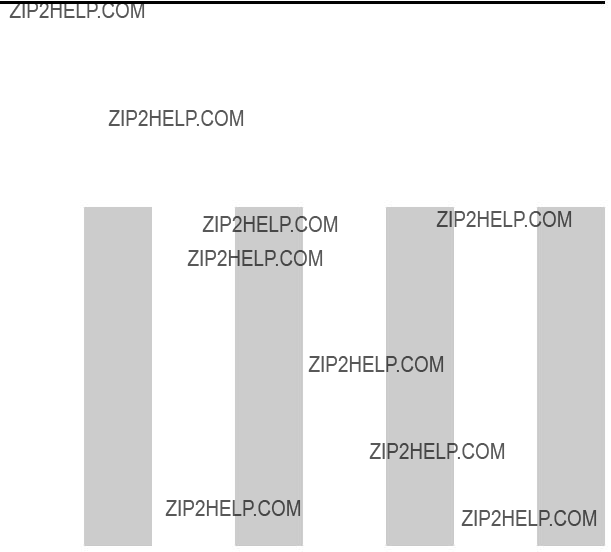
5. System settings
The following lists the functions which can be controlled by editing controller
???Read command
???Crosspoint switch
???Wipe pattern selection (BKGD)
???Transition mode (MIX/WIPE) selection
???Auto transition time setting
???Auto transition execution
<Table of wipe patterns supported>
On the RS422 sub menu of the CTL menu, set On or Off for control from the external device (editor) connected to the
For details on the settings, see
141

5. System settings
The user can set the functions that are to be controlled from the GPI ports and set whether to enable the control. ??? Refer to
??????Press the [CONFIG] button to light its indicator and display the CONFIG menu. ??? Refer to
??????Turn [F1] to display the sub menu corresponding to the TALLY/GPI connector concerned and set the function to be controlled by the GPI port.
TALLY/GPI connector of mainframe:
<Menu display>
TALLY/GPI connector of control panel:
<Menu display>
??????Turn [F2] to select the port to be controlled using the Port item.
??????Turn [F3] to select the function to be assigned using the Assign item.
??? Refer to ???Control using the GPI input port??? and ???Output from the GPI output port???.
??????Turn [F5] to set enable or disable for the control to be exercised from each port using the GPIEN item.
Enable: Control is enabled.
Disable: Control is disabled.
???Settings for the GPIEN item can be assigned to one of the user buttons.
???See
142
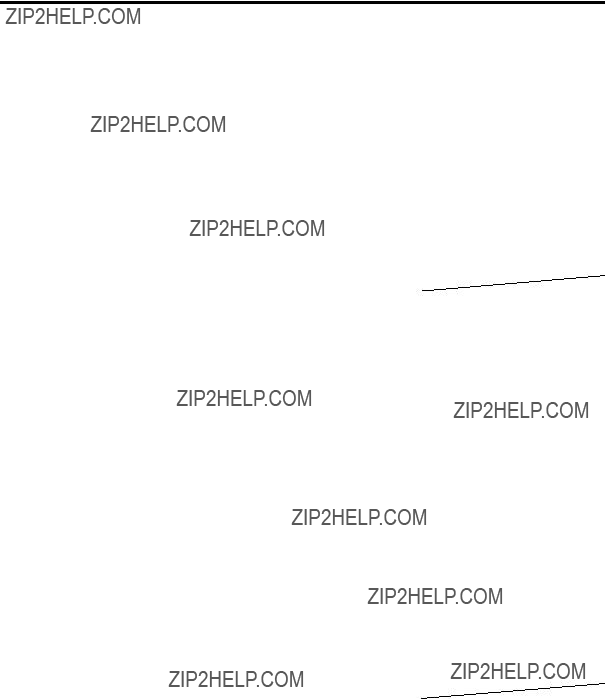
5.System settings
???Control using the GPI input port
??? Output from the GPI output port
143

5. System settings
A camera and
Up to five cameras can be controlled via a controller
The unit can also be connected directly to a
Be absolutely sure that the power of the equipment is turned off before proceeding to connect the cables.
Functions that can be controlled from the unit
???Switching of the cameras to be controlled in line with the selection of the crosspoint buttons (PGM/A 1 to 32 and PST/B 1 to 32).
???The camera and
???The operations for the setting menus of the camera are performed.
???When the unit is connected directly to a
144

5. System settings
Example of connections (when the unit and a controller are connected)
Controllers that can be connected:
For details on connecting the
Video signals
Camera 




REMOTE/SERVICE connector
<Connection specifications>
1
2RXD IN
3TXD OUT
4DTR
5GND
6DSR
7RTS
8CTS
145

5. System settings
Example of connections (when the unit and a
??? Connections for
Analog component signals
(For the connection speci??? cations, refer to the Operating Instructions of the
Analog Input Board
Cable length: Max. 656 ft. (200 m)
Twisted pair cable (AWG24)
<Connection specifications>
When the
For further details, refer to the Operating Instructions of the
146

5.System settings
???Connections for
CONTROL IN IP/RP connector
COM connector
Cable length: Max. 656 ft. (200 m) Twisted pair cable (AWG24)
<Connection specifications>
1FRAME GND
2RXD ???
3TXD +
4GND
6GND
7RXD +
8TXD ???
9FRAME GND
Cable length: Max. 1640 ft. (500 m)
(UTP category 5)













Switch settings
7
8
???: Twisted pair cable
CONTROLLER
147

5. System settings
Camera control settings
Five cameras can be controlled either through the controller that is used for the camera
??????Press the [CAM] button to light its indicator and display the CAM menu. ??? Refer to
??????Turn [F1] to display the CamCTL1 sub menu.
<Menu display>
??????Turn [F2] to set the control signal (for the camera) that supports the input signal using the CTL item. Establish the associations between the switching of the cameras linked to the selection of the crosspoint buttons (PGM/A 1 to 32 and PST/B 1 to 32) and the tally control.
???When camera control is enabled, the ???c??? mark appears on the multi view display in front of the names of the materials in the cameras targeted for control.
???When ???P/TDirt??? has been selected as the Protcol item, only ???1??? appears.
??????Turn [F3] to select the input signal using the Signal item.
??????Turn [F4] to enable or disable tally control using the Tally item.
This setting can be selected when ???P/TDirt??? has been selected as the Protcol item.
Enable: Tally control is enabled.
Red tally signal On/Off control is exercised from the
Disable: Tally control is disabled.
??????Turn [F5] to set the device to be controlled using the Protcol item.
P/TCont: The controller for the camera or controller for the
Select this when the controller is to be connected to the unit and a multiple number of cameras and/or
P/TDirt: Select this when a
148

5. System settings
??????Turn [F1] to display the CamCTL2 sub menu.
<Menu display>
??????Turn [F2] to set the camera to be controlled using the CTL item.
??????Turn [F3] to select the control to be exercised by operating the positioner using the PosCont item.
PanTilt: Panning is controlled by left/right (X) operation; tilting is controlled by up/down (Y) operation.
Zm/Focs: Lens focusing is controlled by left/right (X) operation; lens zooming is controlled by up/down
(Y) operation.
Each time the rotary encoder [Z] is pressed, the PanTilt or Zm/Focs setting is selected alternately.
???Control of lens focusing is possible when the lens focus of the camera is set to manual operation.
???If the crosspoint buttons (PGM/A 1 to 32 and PST/B 1 to 32) are held down when ???P/ TCont??? or ???P/TDirt??? is selected as the Protcol item setting, delegation to the CamCTL2 menu is initiated.
???For controlling the panning
???For controlling the lens focusing
??? Turn [F4] to set the control (panning, tilting, lens focusing and lens zooming) speed using the PTSpeed Item.
Fast: Control is exercised at the fastest speed.
Middle: Control is exercised at the medium speed.
(This cannot be selected for the control of lens focusing or lens zooming.)
Slow: Control is exercised at the slowest speed.
???When controlling the
After turning the
???The menu display (On or Off) does not indicate the status of the camera.
149

5. System settings
Camera's menu operations
The camera's menu displays, the movements of the cursor displayed on the menus and the entry of the changes made can be performed from the unit.
??????Press the [CAM] button to light its indicator and display the CAM menu. ??? Refer to
??????Turn [F1] to display the CamCTL3 sub menu.
<Menu display>
??????Turn [F2] to set the camera to be controlled using the CTL item.
??????If the camera's menus are to be displayed, turn [F3] to select On, and then press the [F3] switch. If they are not to be displayed, turn [F3] to select Off and then press the [F3] switch.
When On has been selected, "Cursor" is displayed in the Item and Val/Y/N items.
??????The cursor displayed on the camera's menus can now be moved by turning [F4]. Turn [F4] clockwise to move the cursor down or counterclockwise to move it up.
??????Turn [F5] clockwise to move to the camera???s setup screen.
Operation of [F5] in the setup screen
Selecting Yes/No:
Turn clockwise to select ???Yes (confirmed)??? and turn counterclockwise to select ???No (unconfirmed)???.
Changing values:
Turn clockwise to increase and turn counterclockwise to decrease.
150

5. System settings
The alert status (alarms) for this unit???s power supply and cooling fan are displayed on the LCD.
??????Press the [SYSTEM] button to light it, and display the SYSTEM menu. ??? Refer to
??????Turn [F1] to display the Alarm sub menu.
<Menu display>
Alarm 
 Alarm
Alarm
The alert status of the power supplies (mainframe and control panel) is displayed in the Power item. The alert status of the cooling fan (mainframe) is displayed in the Fan item.
NoAlarm: No irregularity
Alarm: Irregularity
A message is displayed on the LCD when an alarm has occurred.
151

5. System settings
??????Turn [F1] to display the OptVer sub menu.
<Menu display>
SYS 13|Select |Board |Version|
OptVer | SLOTA|
SLOTB
??????Turn [F2] to select the option slot using the Select item.
SLOTA: Option slot A
SLOTB: Option slot B
??????The types of the optional boards connected are displayed in the Board item.
??????The optional board version information is displayed in the Version item.
152

5. System settings
Initialization returns the set data to the factory shipment status.
(The network settings and the date and time settings are not initialized.)
??????Press the [SYSTEM] button to light its indicator and display the SYSTEM menu. ??? Refer to
??????Turn [F1] to display the Initial sub menu.
<Menu display>
??????Press [F2] to initialize the settings. The ???Init???? message appears.
??????To initialize the settings, turn [F2] to select YES, and then press the [F2] switch. To cancel the initialization, turn [F2] to select No, and then press the [F2] switch.
<Menu display>
YES
The range for executing a transition can be initialized by operating the fader lever.
Initialization should be performed when transitions are not completed to the end even when the fader lever has been moved as far as it will go.
??????Press [F3] in the Initial sub menu to perform initialization. The "F Init???? message is displayed.
<Menu display>
YES
??????When initializing, turn [F3] to select ???Yes??? and press the [F3] switch. When not initializing, turn [F3] to select ???No??? and press the [F3] switch.
153

6. External interfaces
Connect the MAIN FRAME connector on the control panel and PANEL connector on the mainframe using the CAT5E cable supplied.
CAT5E, straight cable, STP (shielded twisted pair), 10 m
Provide the cable below if the control panel and mainframe are installed in a location where the CAT5E cable provided is not long enough to connect them (where the distance between the control panel and mainframe is more than 10 meters).
CAT5E, straight cable or crossover cable, STP (shielded twisted pair), max. 100 m
Connect the host computer to the LAN connector on the mainframe when the image transfer function is to be used. Provide the cable below to connect the host computer.
CAT5E, straight cable or crossover cable, STP (shielded twisted pair), max. 100 m
For details on the image transfer settings, refer to ???7. Image transmission functions???.
154
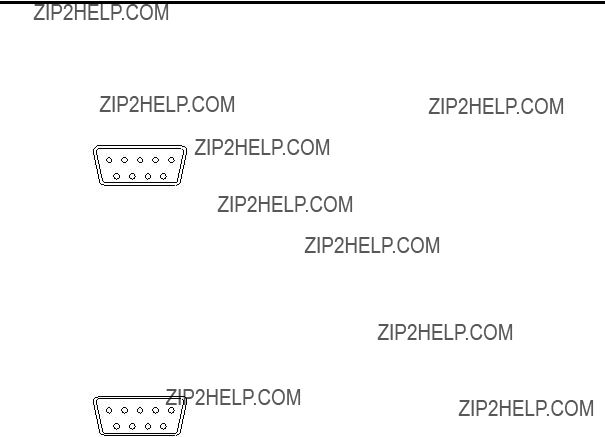
6. External interfaces
The unit can be controlled by an external device by connecting the device to the EDITOR connector. Use it with the settings below.
One or more Panasonic
For details on the connections, refer to
5 4 3 2 1
9 8 7 6
??? The pin assignment is different from that of the EDITOR connector.
155

6. External interfaces
This connector is provided with eight contact input ports (GPI In) for controlling the unit from an external device, 31 ports (GPI Out) for outputting the tally and status information from the unit to the external device, and one port (ALARM Out) that is used exclusively as the alarm output.
For details of the settings, refer to
Example of GPI Out and ALARM connections
Ensure that the conditions given below are satisfied.
Dielectric strength: Max. DC 24 V
Example of GPI In connections
Provide contact inputs.
+3.3 V
GPI In
Com
156

6. External interfaces
This connector is provided with eight contact input ports (GPI In) for controlling the unit from an external device, 8 ports (GPI Out) for outputting the tally and status information from the unit to the external device, and one port (ALARM Out) that is used exclusively as the alarm output.
For details of the settings, refer to
Example of GPI Out and ALARM connections
Ensure that the conditions given below are satisfied.
Dielectric strength: Max. DC 24 V
GPI Out
ALARM Out
(Max. current: 50 mA)
Com
Example of GPI In connections
Provide contact inputs.
+3.3 V
Tally LED
GPI In
Com
157

7. Image transmission functions
This unit comes with a function for transmitting still images from the host computer to the unit via LAN and a function for importing still images from the unit into the host computer. The image transmission software must be installed in the host computer from the
For details on installation, refer to ???How to install the software???.
Specifications
Run the image transmission software (HS450 Tool) in a host computer which satisfies the following conditions.
The image formats supported include bitmap (bmp), JPEG (jpg), TIFF (tif), GIF (gif) and PNG (png).
The image transmission software is equipped with a function for automatically converting images into the specified video format size.
Connections
Connect the LAN connector on the mainframe to the host computer using the LAN cable. The LAN connector comes with an
LAN cable
158
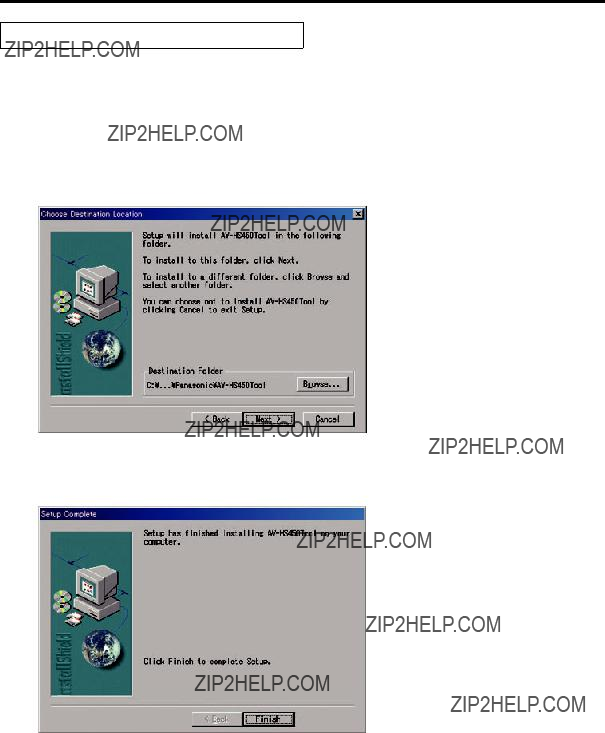
7. Image transmission functions
How to install the software
This section describes how to install the image transmission software (HS450 Tool). Windows XP is used as the host computer???s operating system in the example given here.
1.Insert the
2.Execute the setup program (E:\HS450TOOL\ENG\SETUP.EXE).
3.The installer now starts up so follow its instructions to proceed.
4.The Setup Complete screen appears to indicate that installation is complete. Click [Finish] to close the window.
159

7. Image transmission functions
Operation
This section describes how to operate the image transmission software (HS450 Tool).
<Startup>
On the Start menu of Windows, select [Programs] ??? [Panasonic] ???
<Exit>
Click the [CLOSE] button.
<Setting the IP address>
Set the unit???s IP address in the IP Address setting box.
160

7. Image transmission functions
<Transmitting images to the unit>
1.Select the mode.
Check that ???To HS450??? appears in the [Mode] field.
If ???From HS450??? appears instead, click the [From HS450] button so that ???To HS450??? appears.
2.Select the transmission destination of the images in the [Target] field.
FMEM1: Unit???s frame memory 1
FMEM2: Unit???s frame memory 2
FMEM3: Unit???s frame memory 3
FMEM4: Unit???s frame memory 4
3.When the [Select Image] button is clicked, the file selection dialog box appears on the screen. Select the image file to be transmitted, and click [OK].
The image is now displayed in the image display area, and its horizontal and vertical dimensions appear in the [Width] and [Height] fields at the bottom right.
4.In the [Size] field, select the size of the image to be transmitted to the unit.
HD1080 (1920???1080), HD720 (1280???720), SD480 (720???487) or SD576 (720???576) can be selected as the size. If the image is in a different video format from the ones supported by the unit, the output will not be displayed properly.
5.In the [Aspect] field, select the scaling method.
If the size of the image to be transmitted and the selected image differ, the image will be automatically scaled according to one of the following methods.
Full: The size of the image is increased or reduced so that it fits the size selected in the [Size] field. If the aspect ratio of the image to be transmitted differs from that of the selected image, the ratio between the horizontal and vertical dimensions will be changed.
Keep: The image is expanded or reduced while its original aspect ratio is kept unchanged. Any empty spaces in the image will appear black.
6.The [RGBA(1&2or3&4)] button can be selected when images containing the alpha channel are to be transmitted.
Click the [RGBA(1&2or3&4)] button and select ???FMEM1??? in the [Target] field to transmit the RGB images to frame memory 1 (FMEM1) and the alpha channel images to frame memory 2 (FMEM2).
Selecting ???FMEM3??? in the [Target] field to transmit the RGB images to frame memory 3 (FMEM3) and the alpha channel images to frame memory 4 (FMEM4).
When the [Display Alpha] button is clicked, the alpha channel images appear as a preview display.
7.When the [Send] button is clicked, images are transmitted to the unit and images are saved in frame memory and flash memory.
???The [Wright Flash] button is always in the selected status.
When not saving images in the flash memory, click the [Wright Flash] button to deselect the [Wright Flash] button.
161

7. Image transmission functions
<Transmitting images from the unit>
1.Select the mode.
Check that ???From HS450??? appears in the [Mode] field.
If ???To HS450??? appears instead, click the [To HS450] button so that ???From HS450??? appears.
2. Select the images to be imported to the host computer in the [Target] field.
FMEM1: Images in unit???s frame memory 1
FMEM2: Images in unit???s frame memory 2
FMEM3: Images in unit???s frame memory 3
FMEM4: Images in unit???s frame memory 4
3.When the [Get] button is clicked, the image is imported from the unit.
The image is now displayed in the image display area, and its horizontal and vertical dimensions appear in the Width and Height fields at the bottom right.
4.When the [Save Image] button is clicked, the file save dialog box appears on the screen. Select the image file to be transmitted, and click [Save].
162

8. Setting menu table
A setting is entered when an item displayed (???) is selected and then the [F1], [F2], [F3], [F4] or [F5] switch is pressed.
(It will not be entered unless the switch is pressed.)
163

8. Setting menu table
164

8. Setting menu table
165
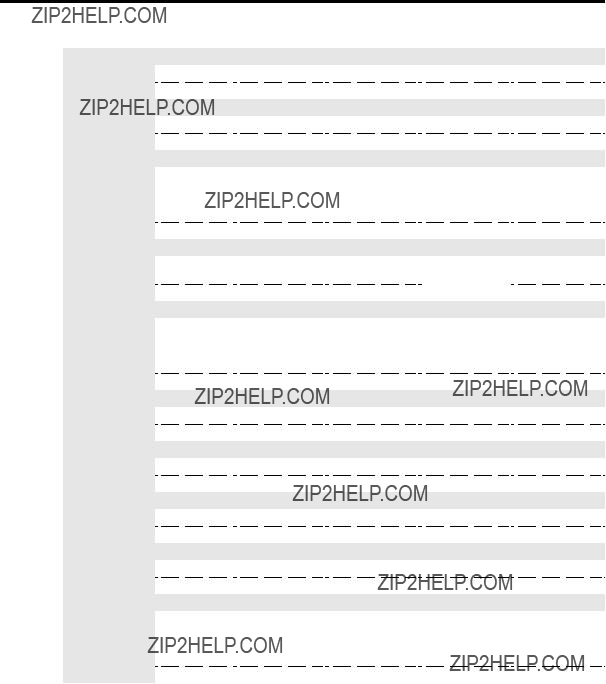
8. Setting menu table
166
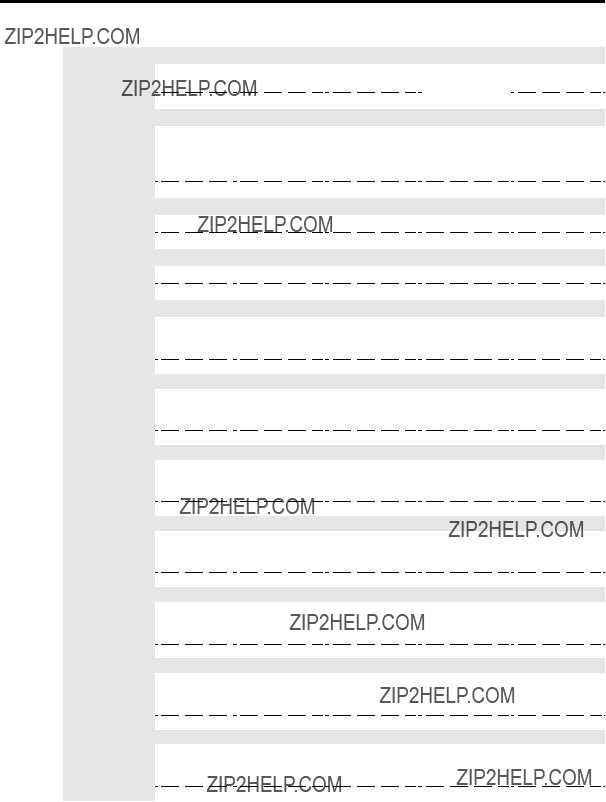
8. Setting menu table
167

8. Setting menu table
168

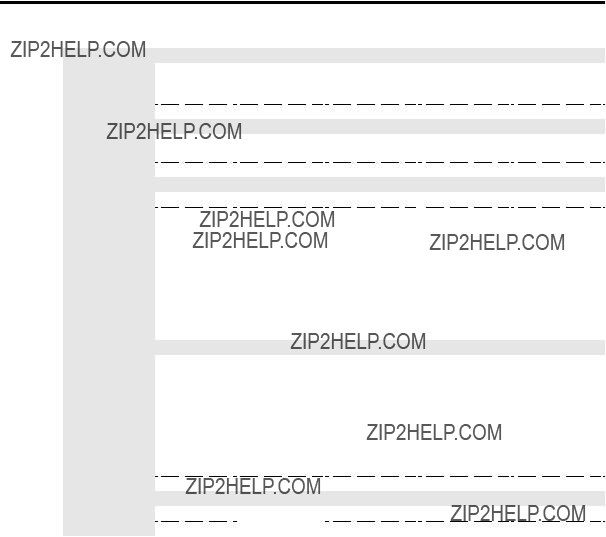

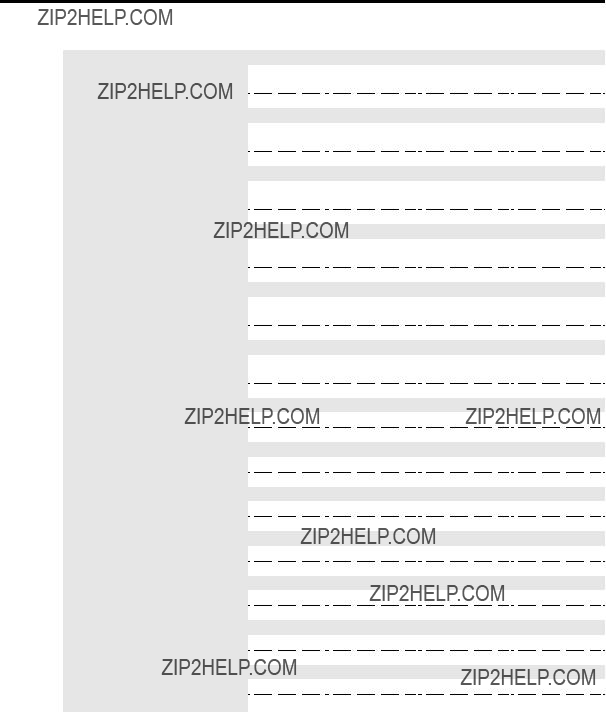








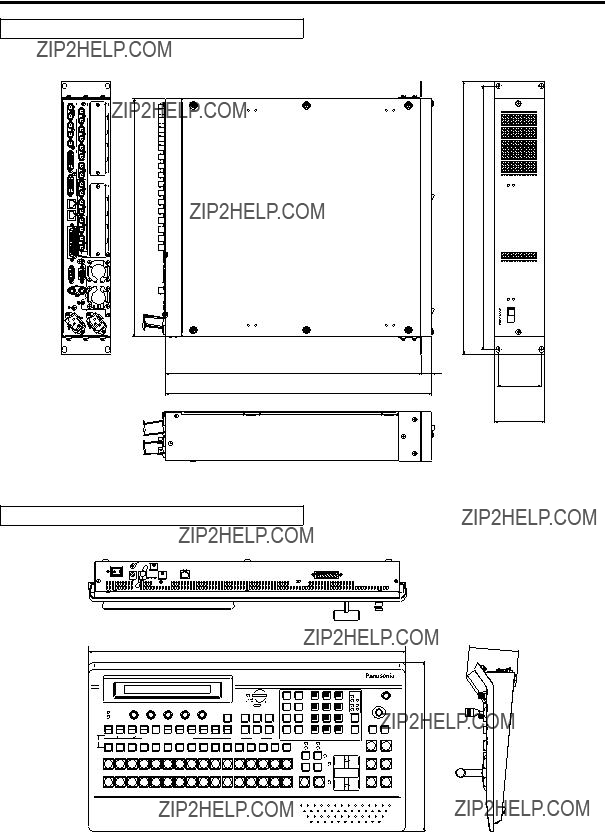









PANASONIC BROADCAST & TELEVISION SYSTEMS COMPANY
UNIT COMPANY OF PANASONIC CORPORATION OF NORTH AMERICA
WESTERN ZONE:
3330 Cahuenga Blvd. West, Los Angeles, CA 90068 (323)
Government office:
(201)
Broadcast PARTS INFORMATION & ORDERING:
9:00 a.m. ??? 5:00 p.m. (PST) (800)
TECHNICAL SUPPORT:
Emergency 24 Hour Service (800)
Panasonic Canada Inc.
5770 Ambler Drive, Mississauga, Ontario L4W 2T3 (905)
Corporativo Panasonic de M??xico
Moras No. 313, Col. Tlacoquemecatl del Valle, Del. Benito Ju??rez, M??xico, Distrito Federal, C.P. 03200. 01 (55) 54 88 10 00